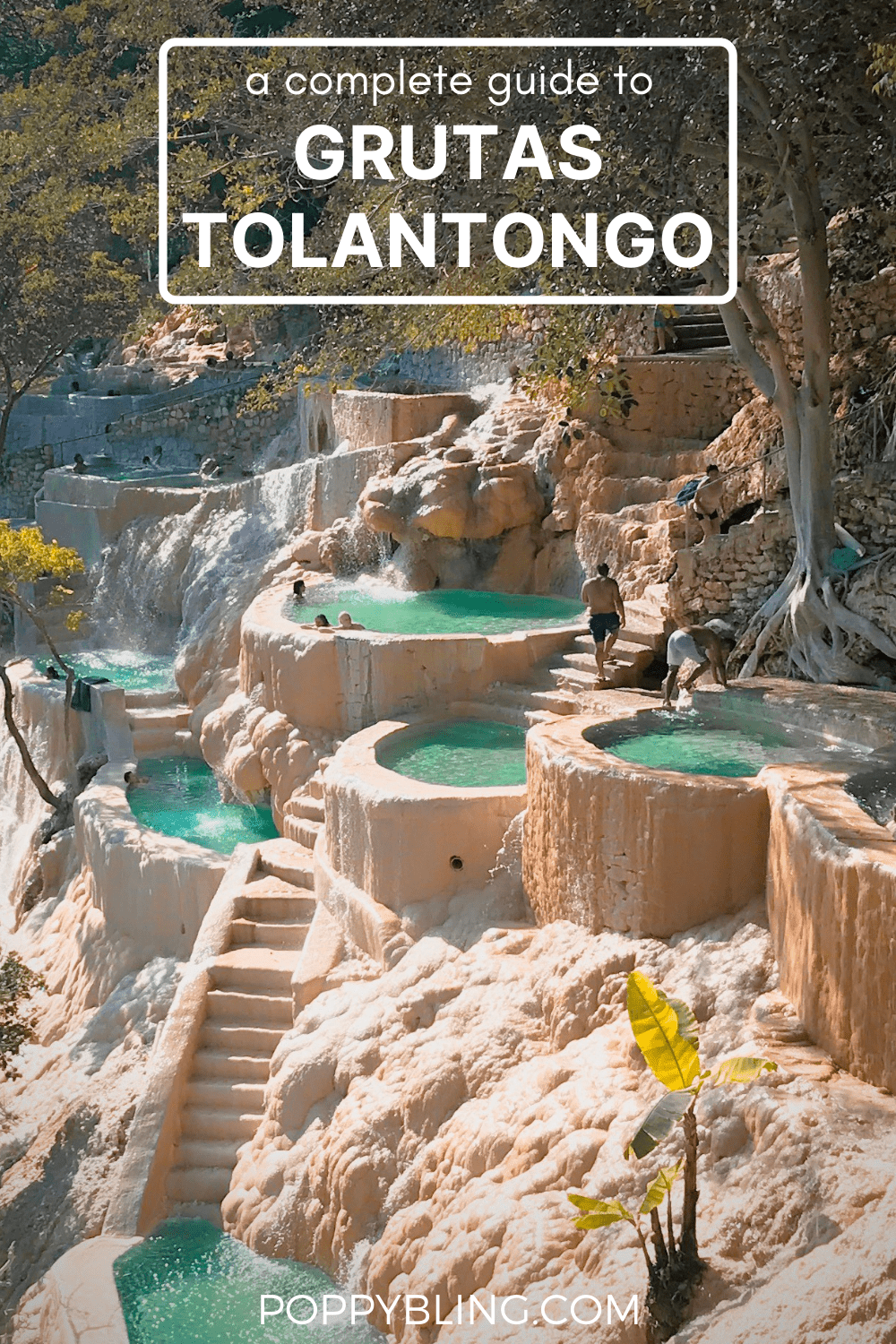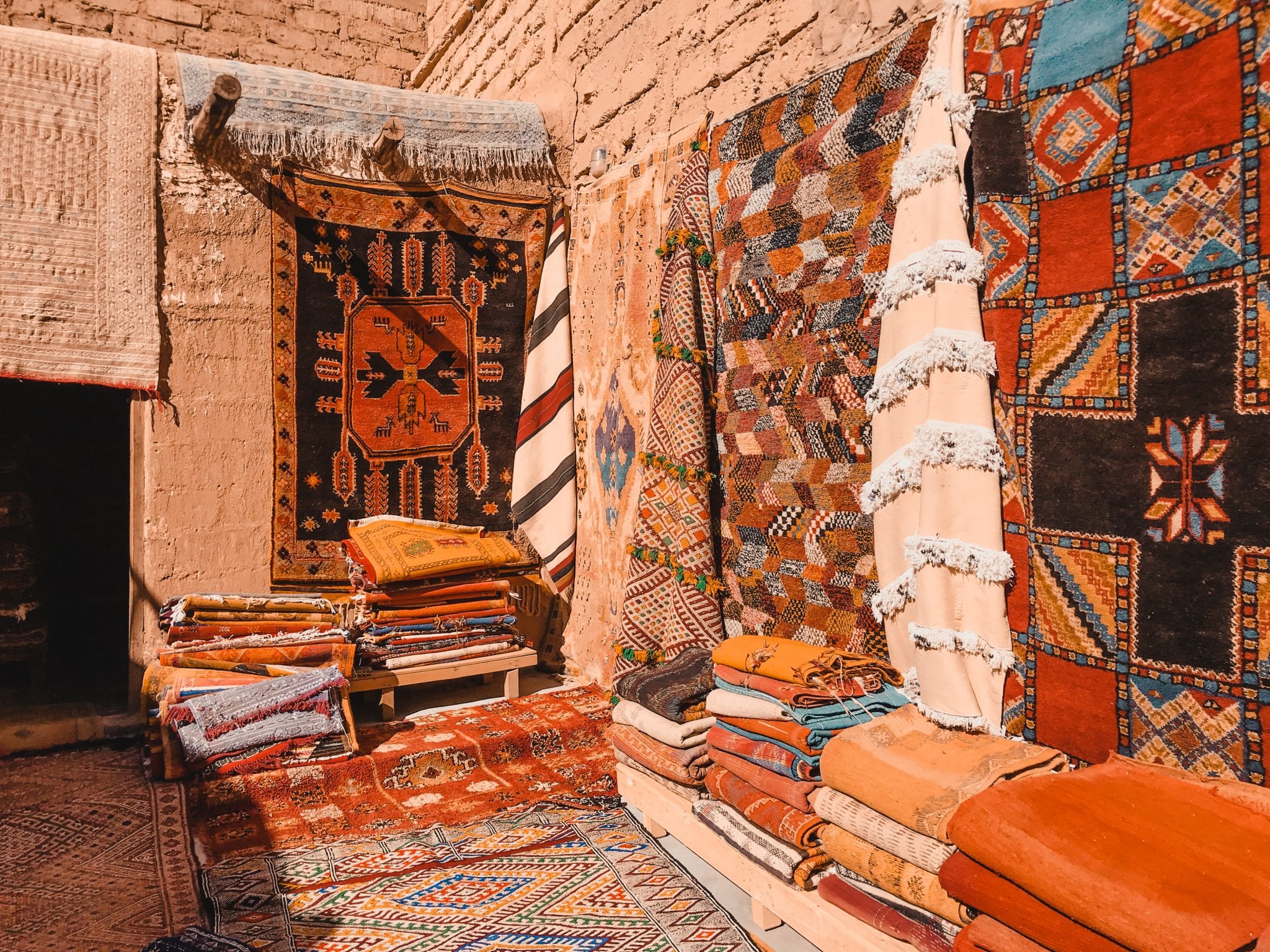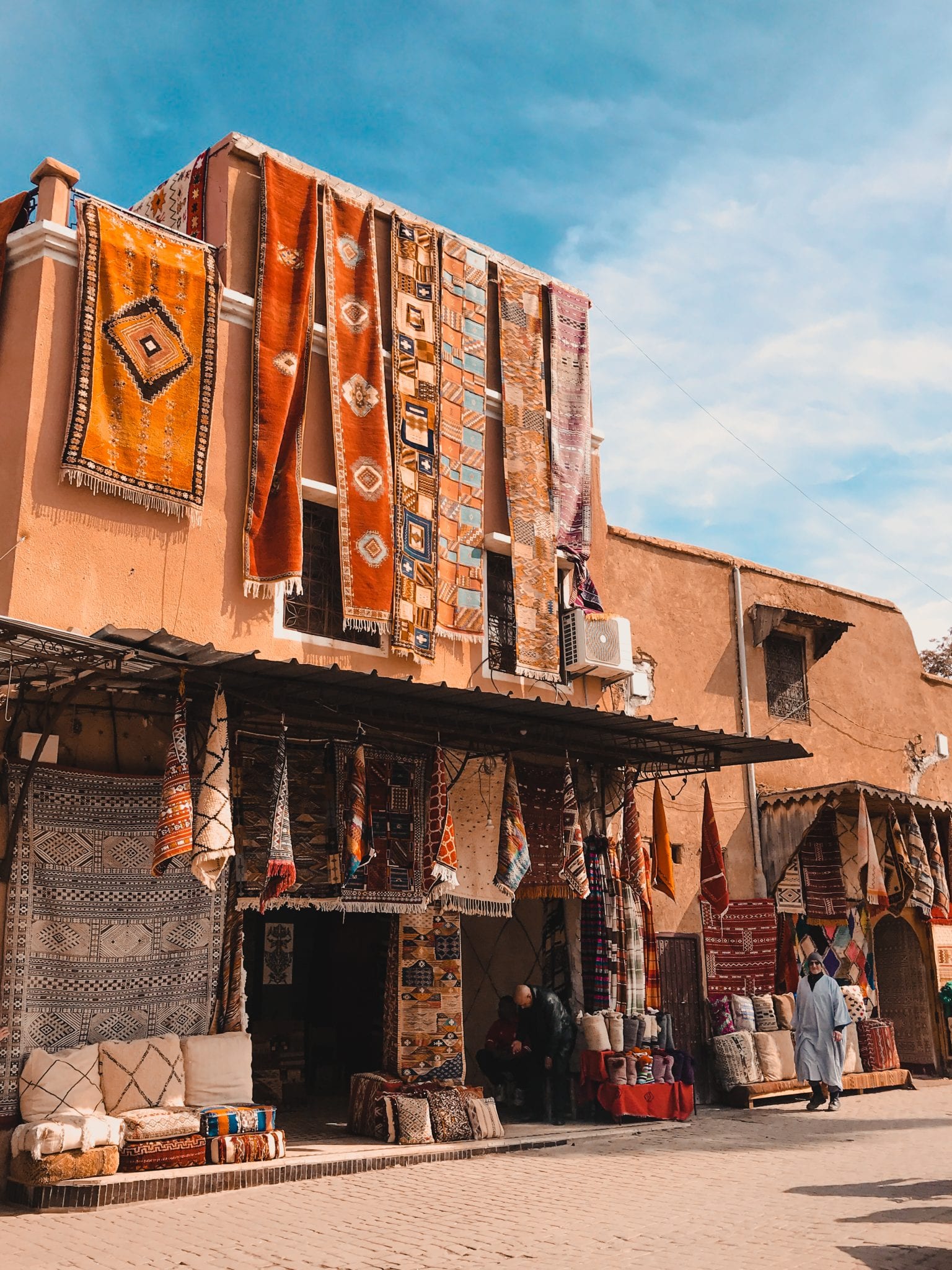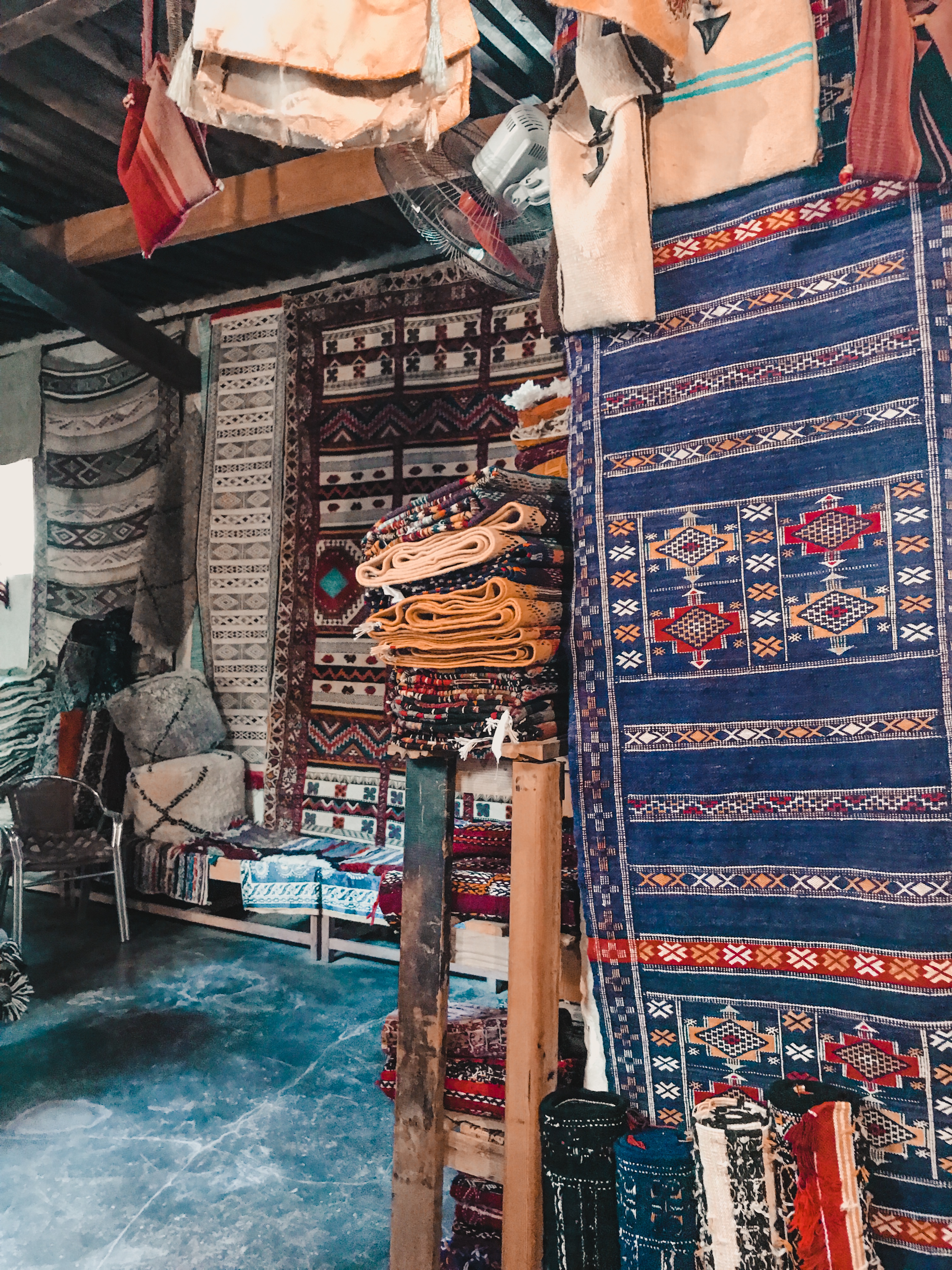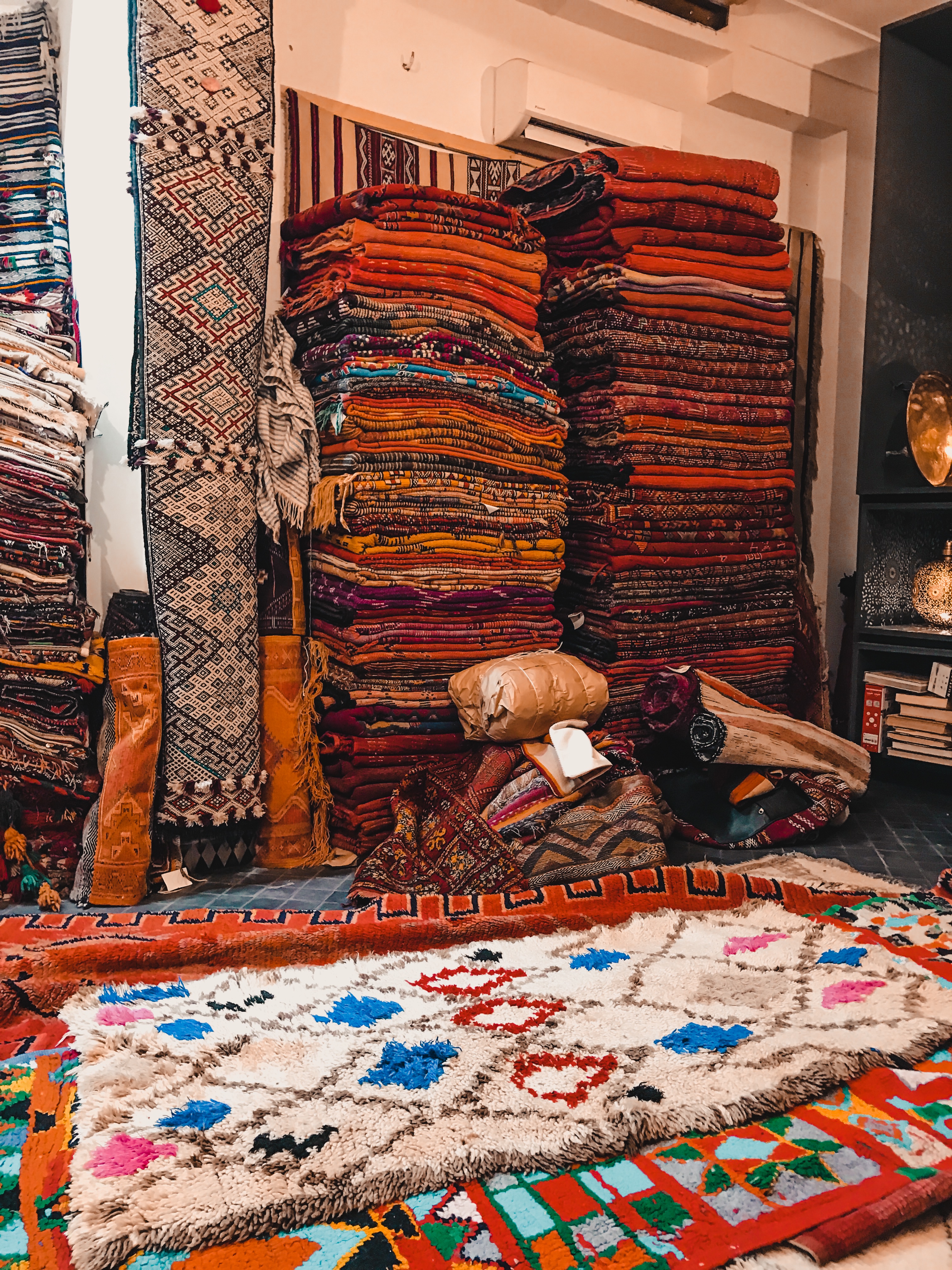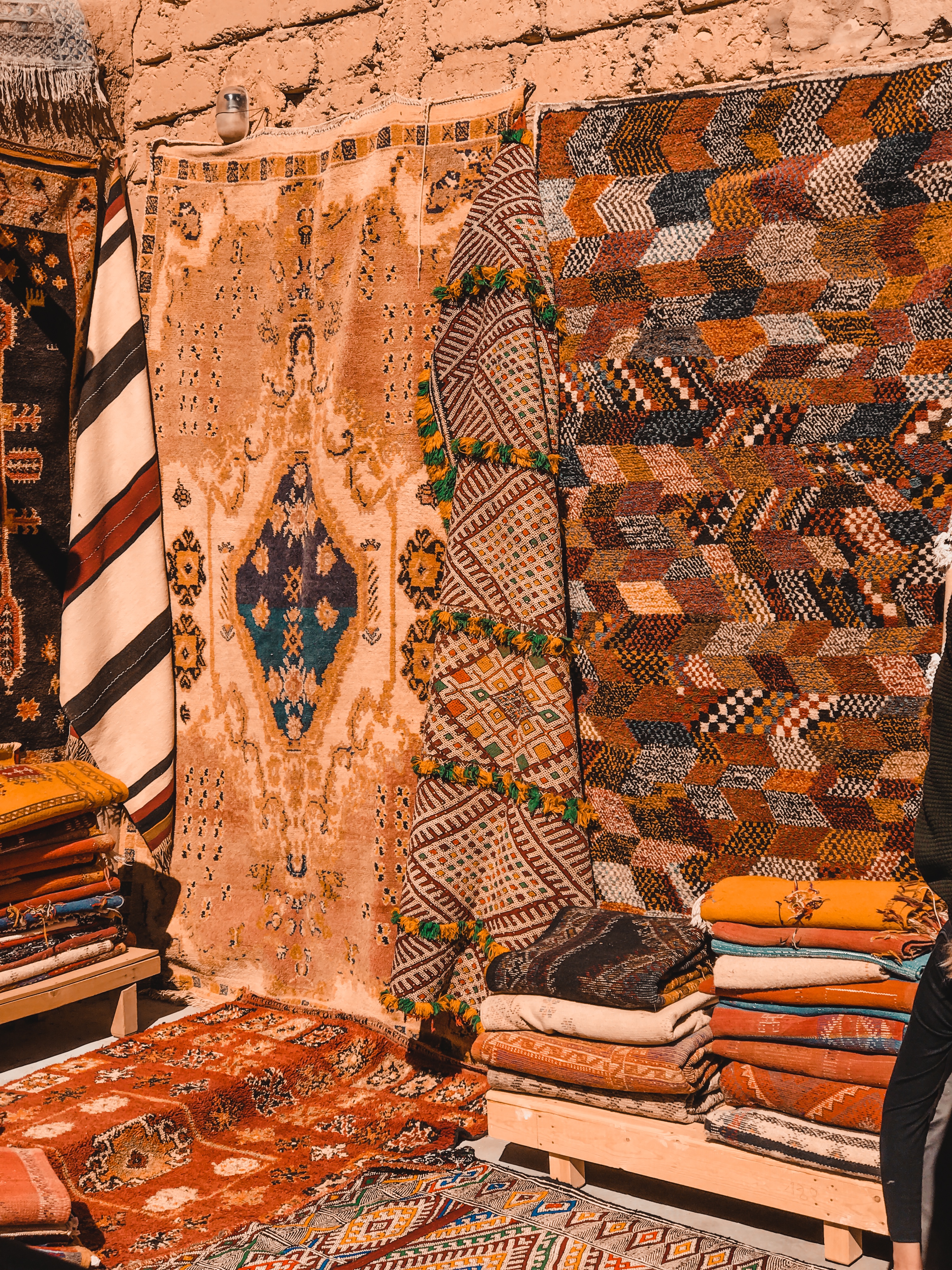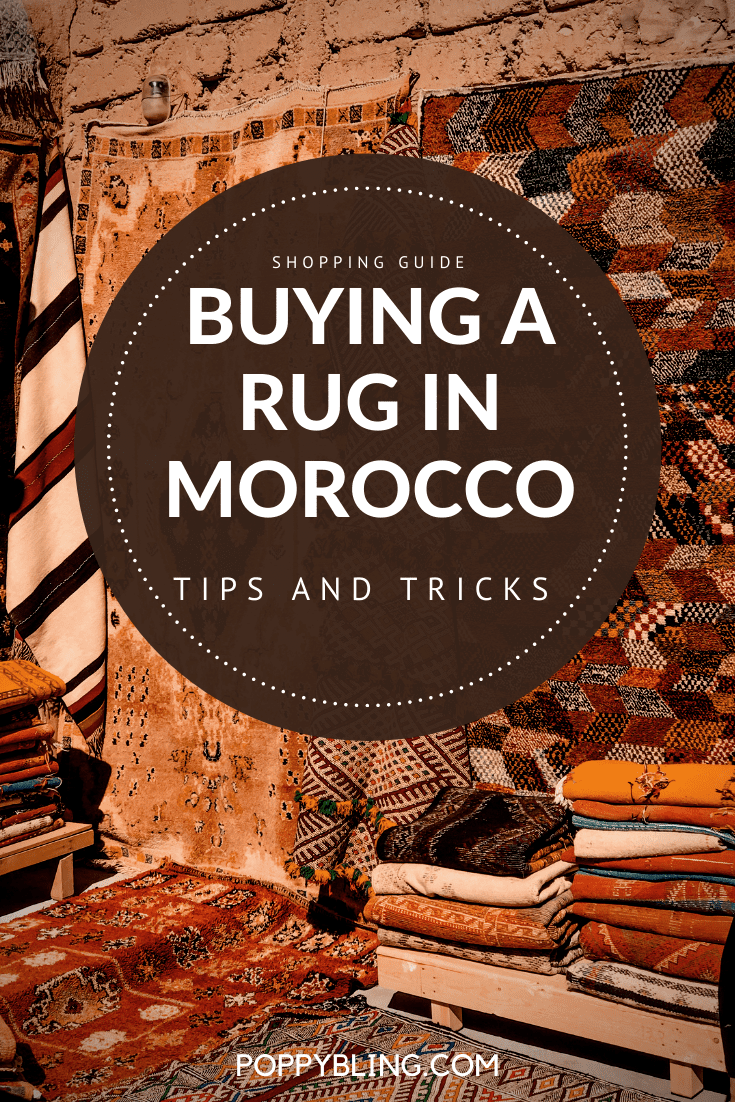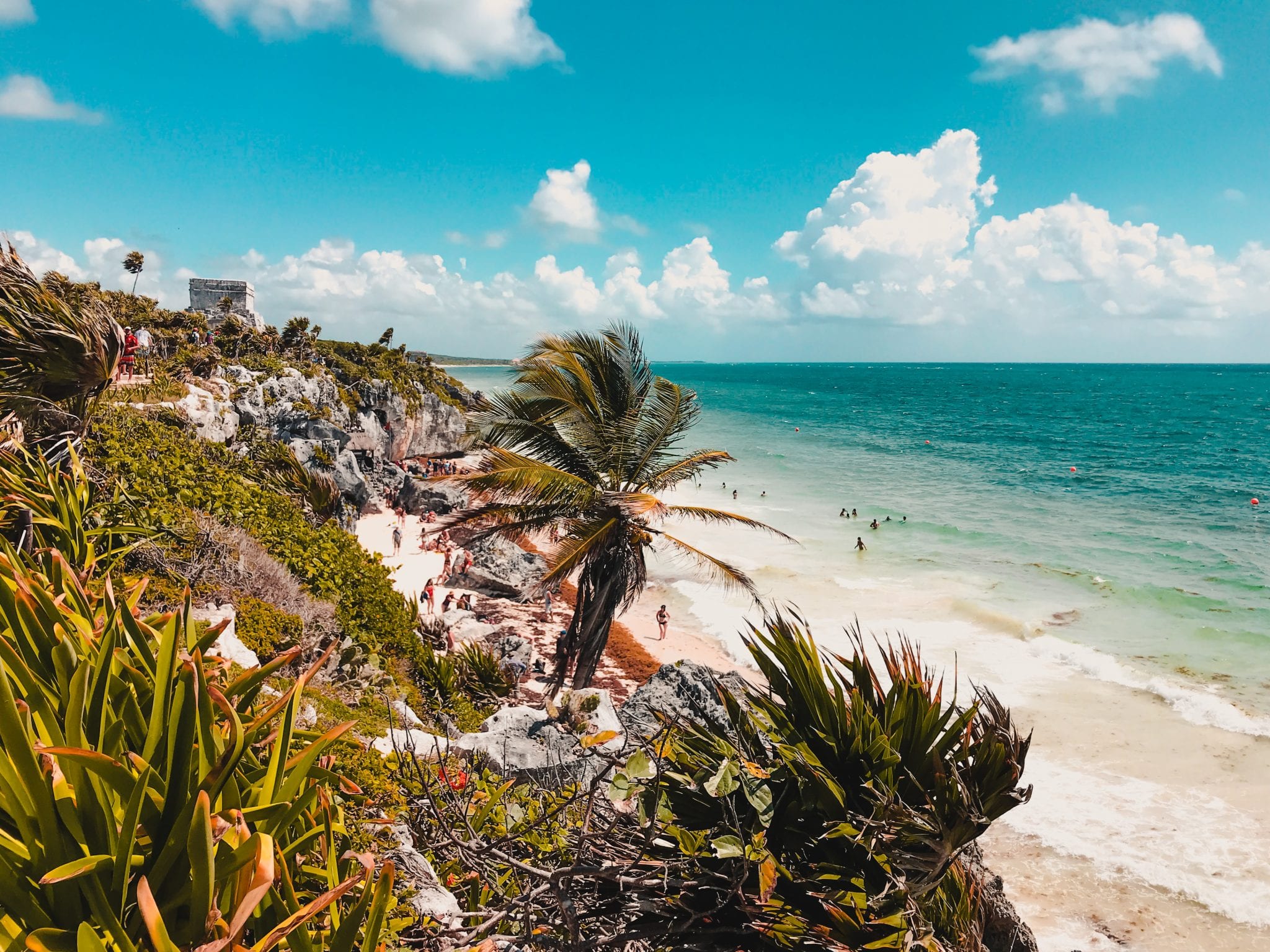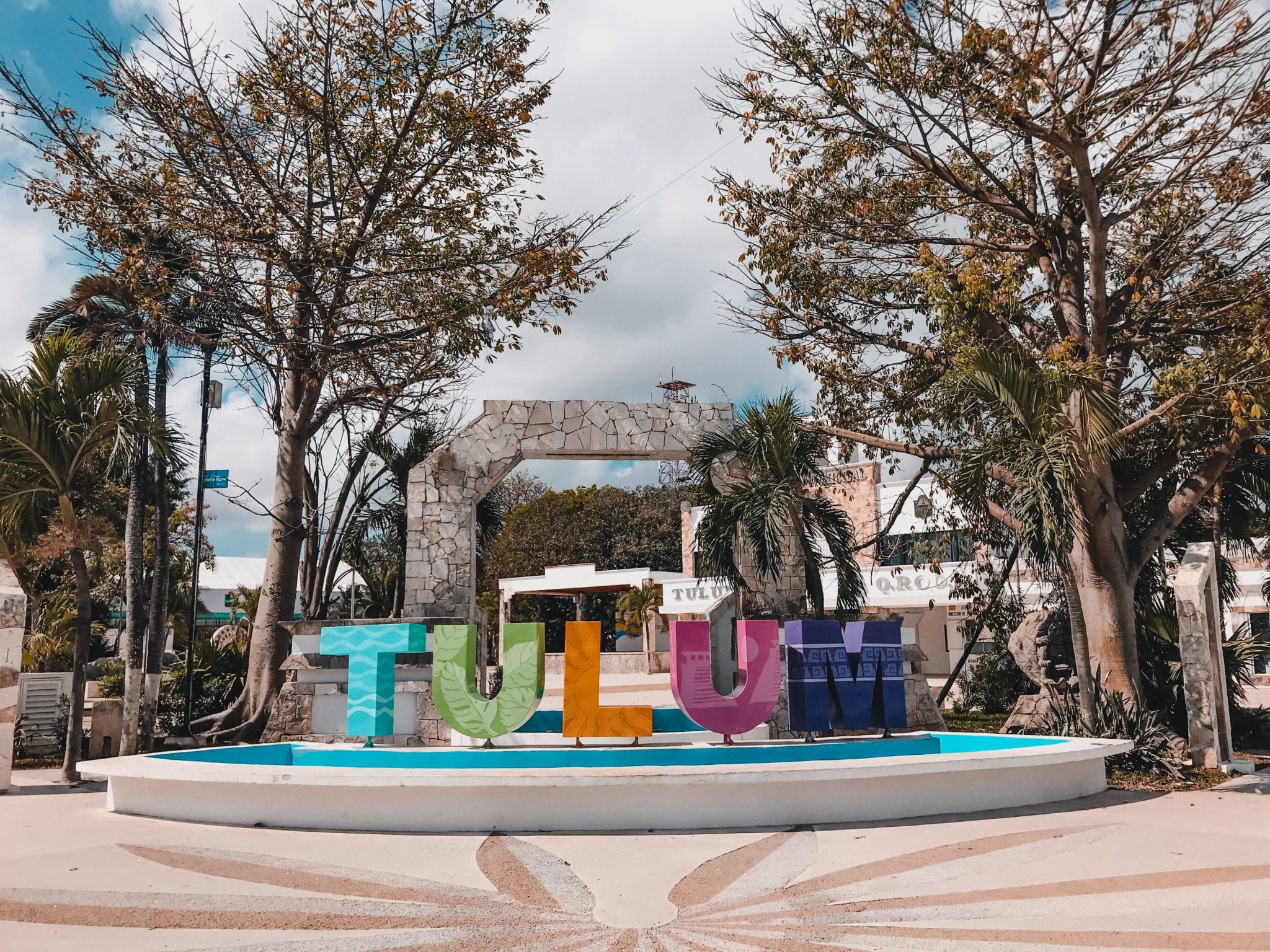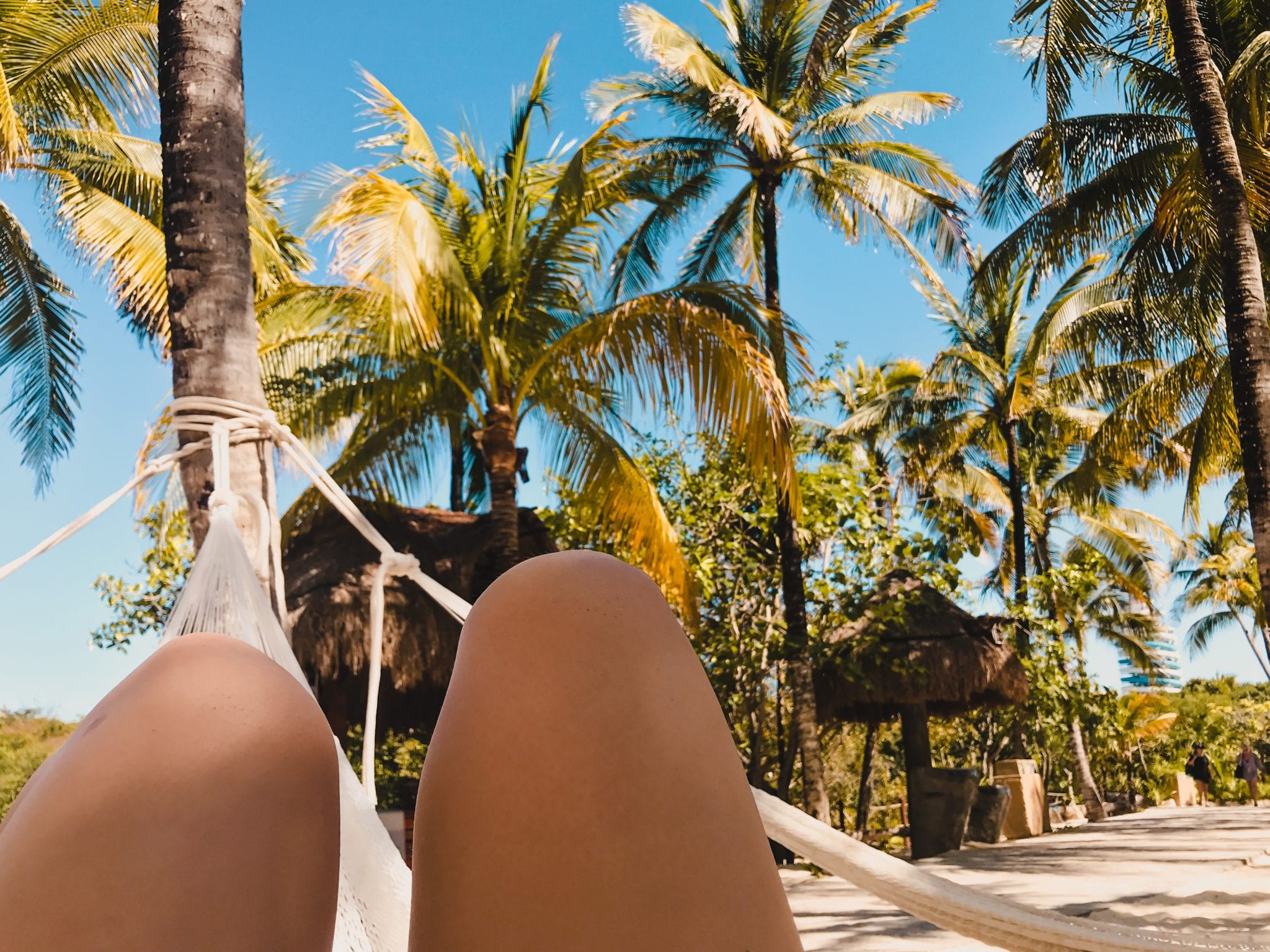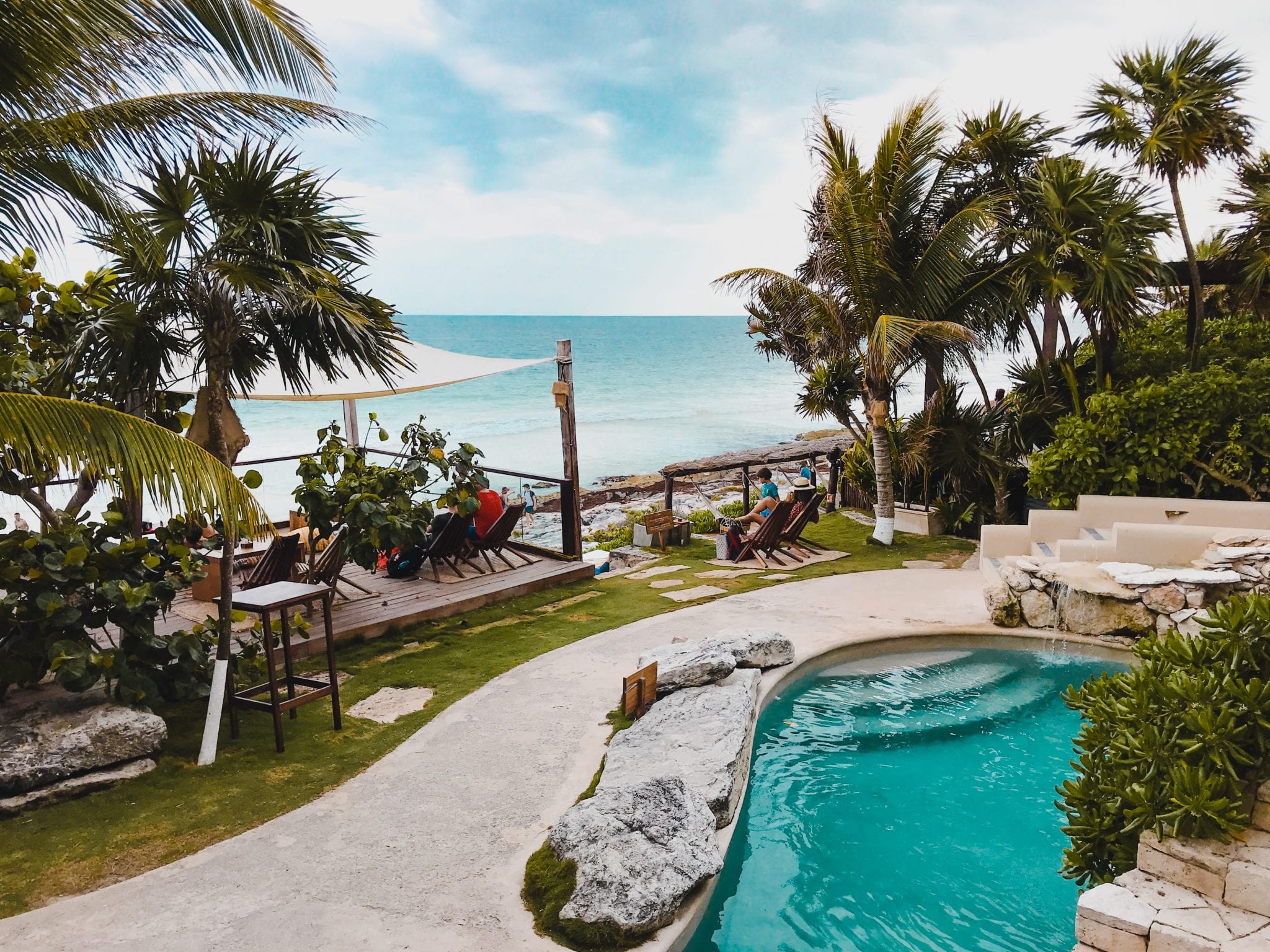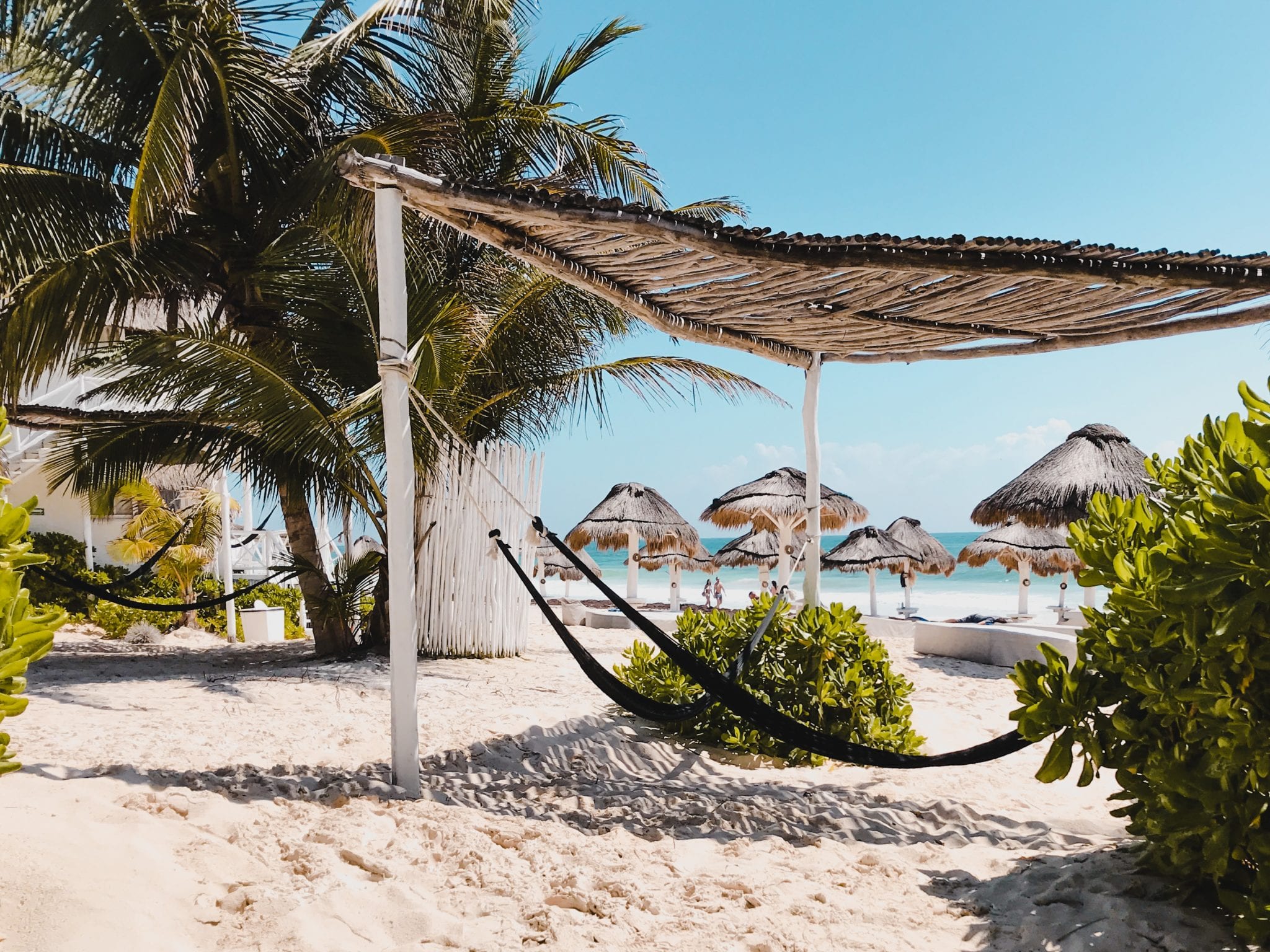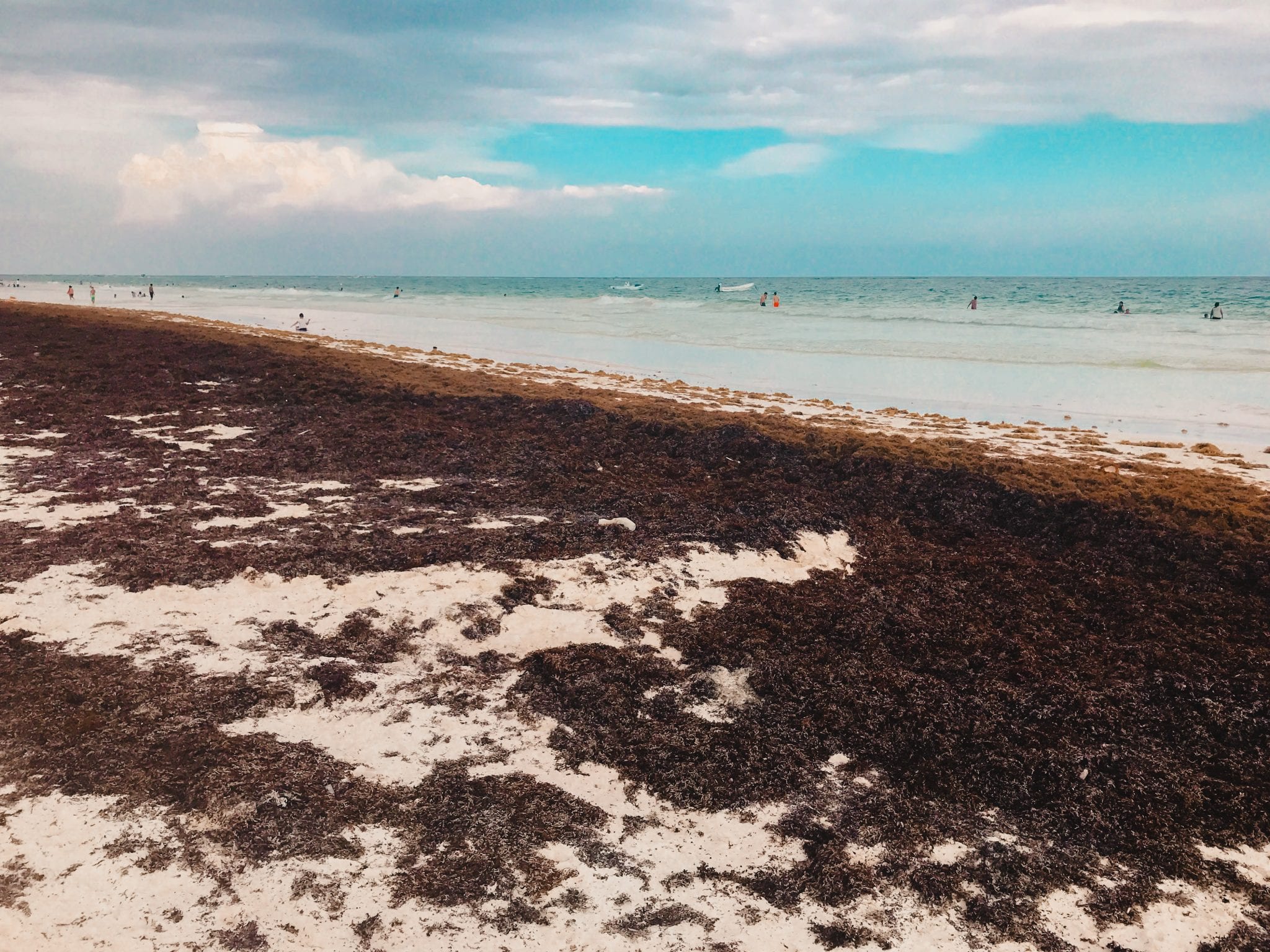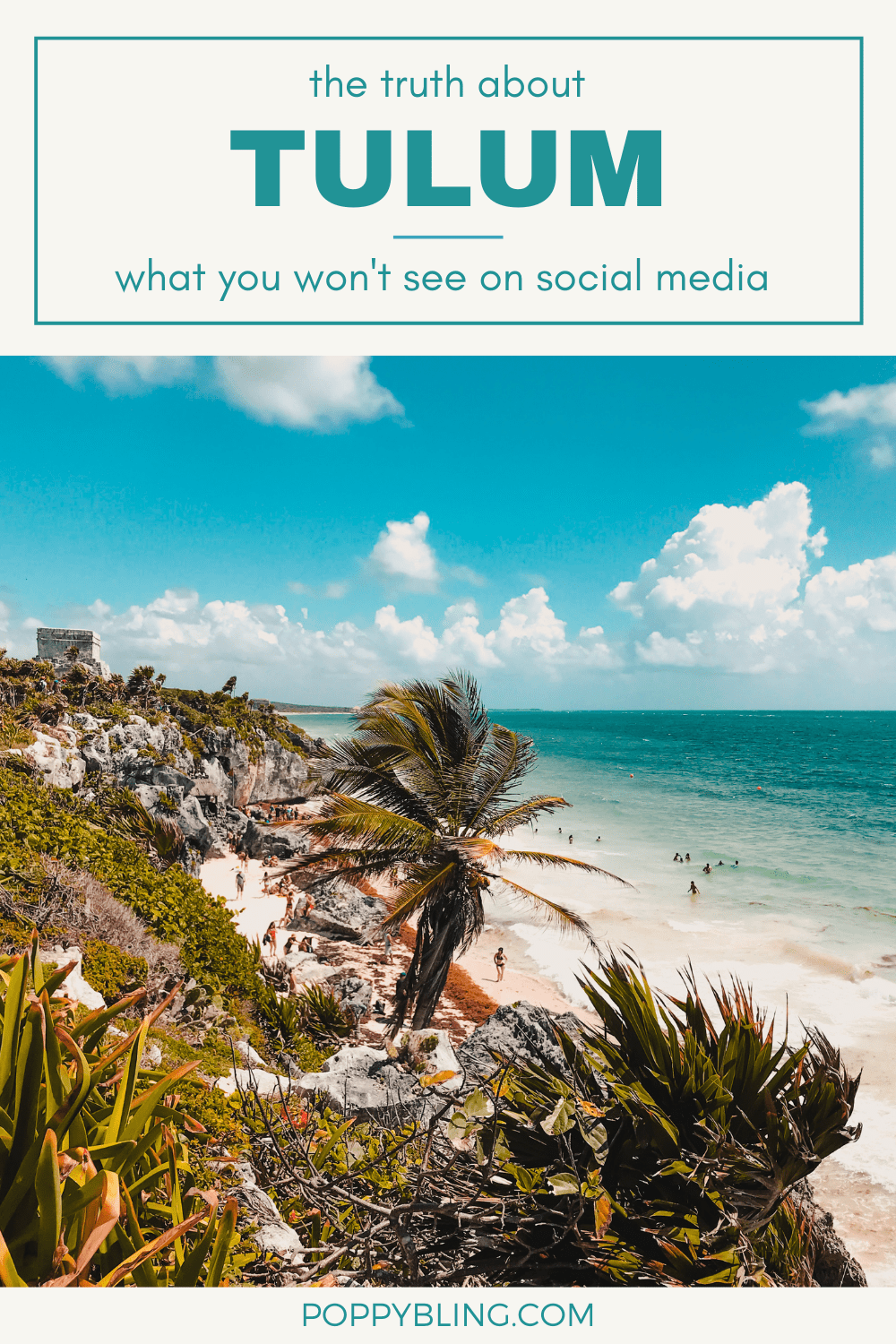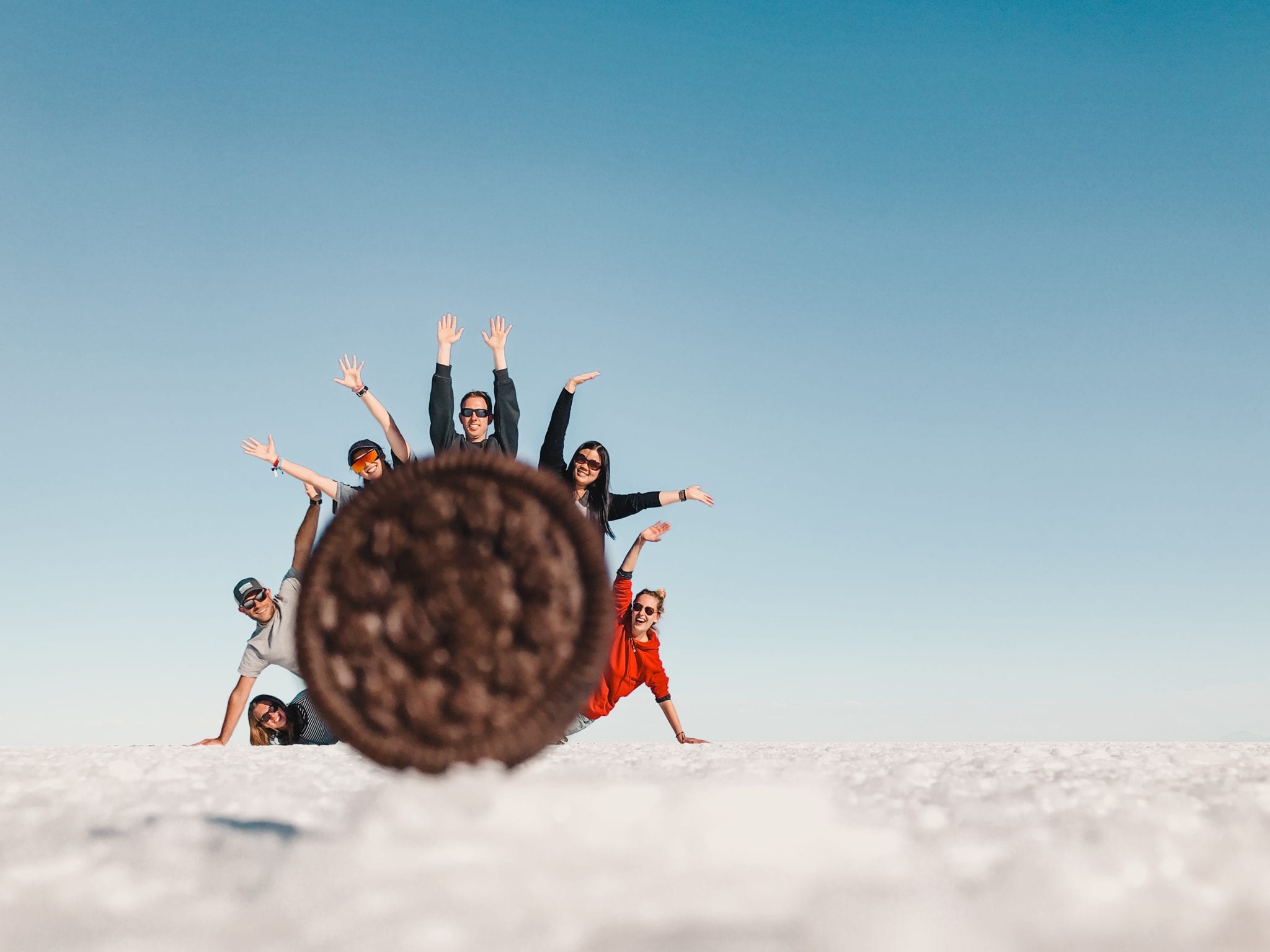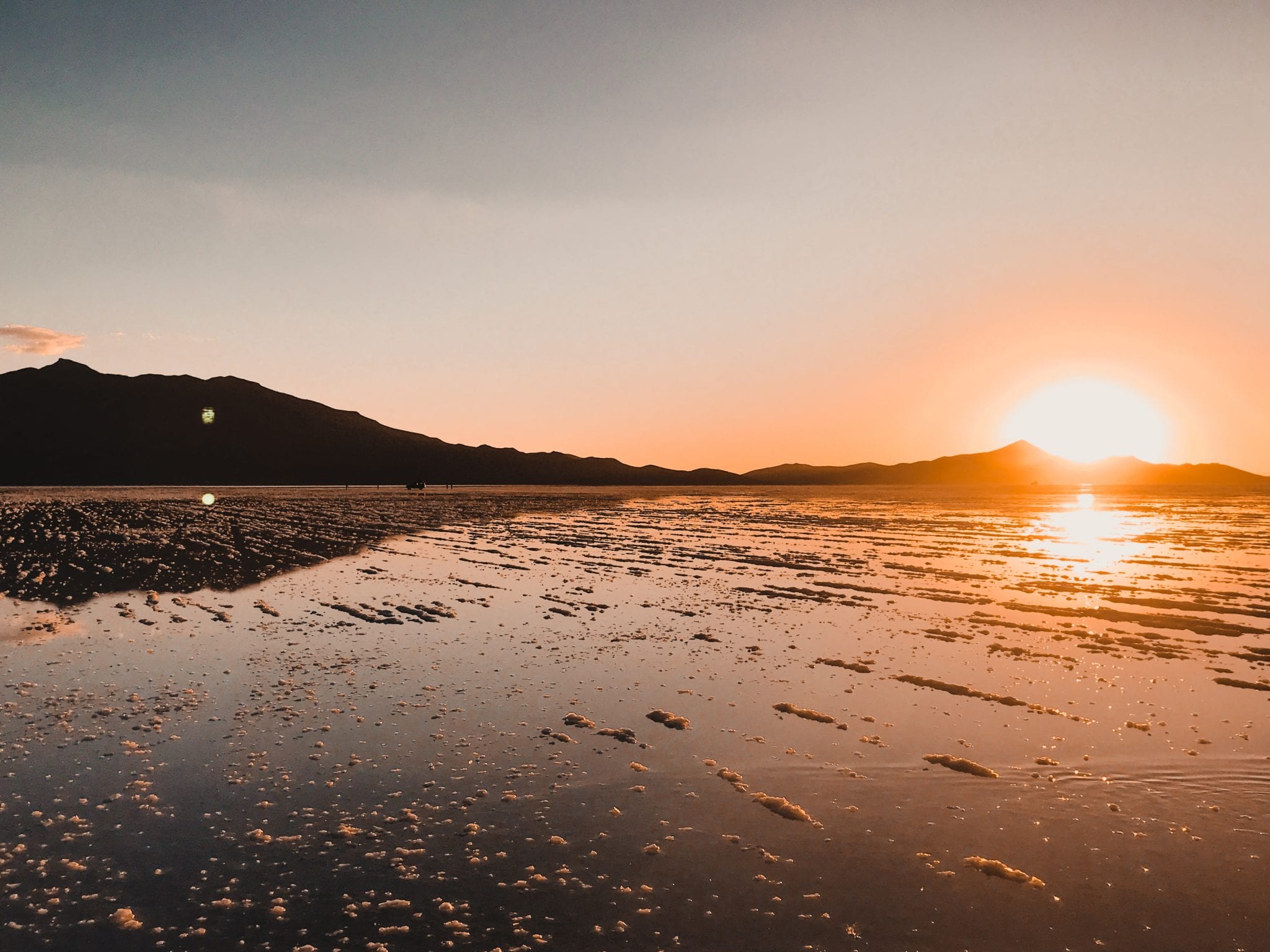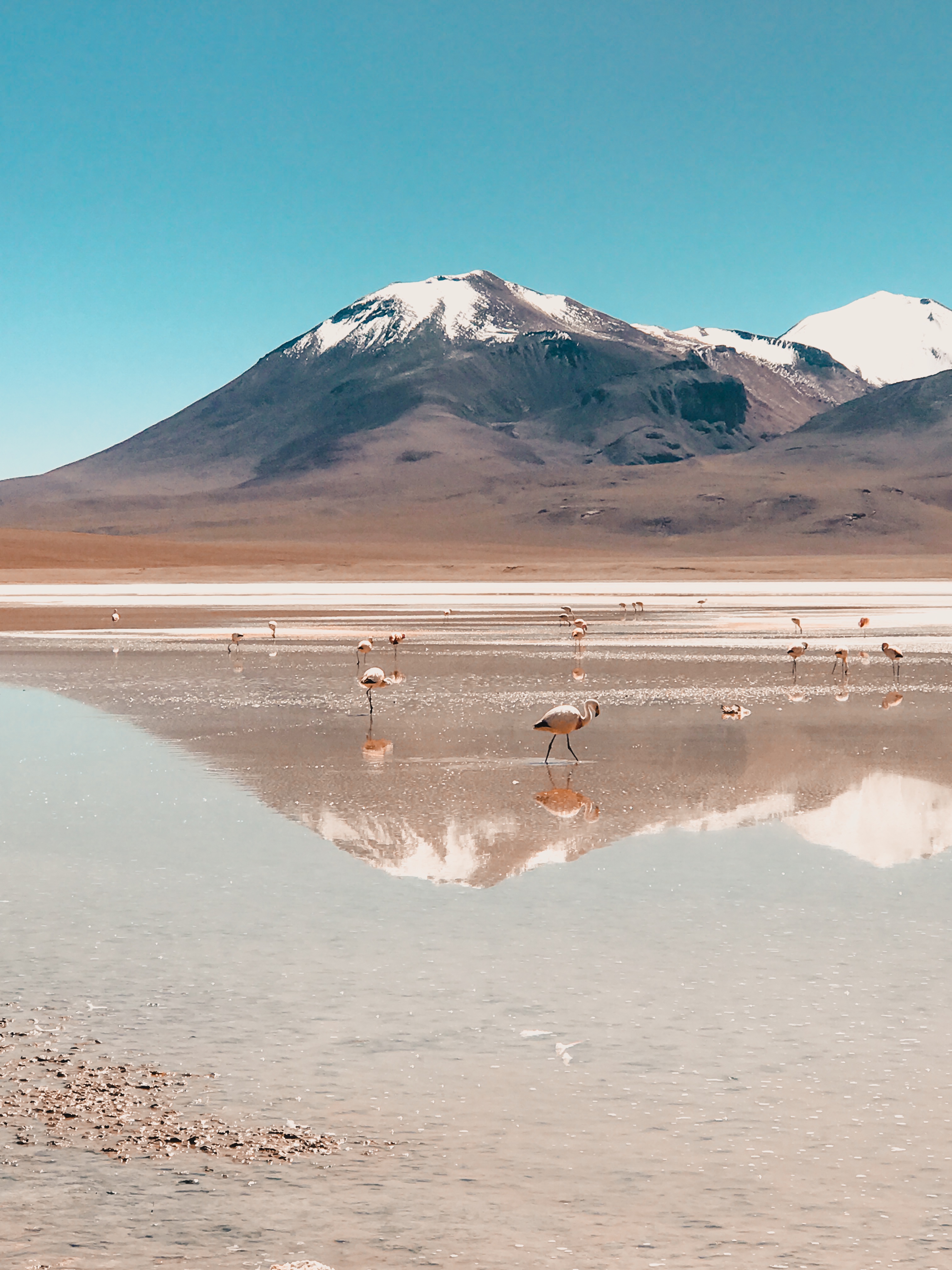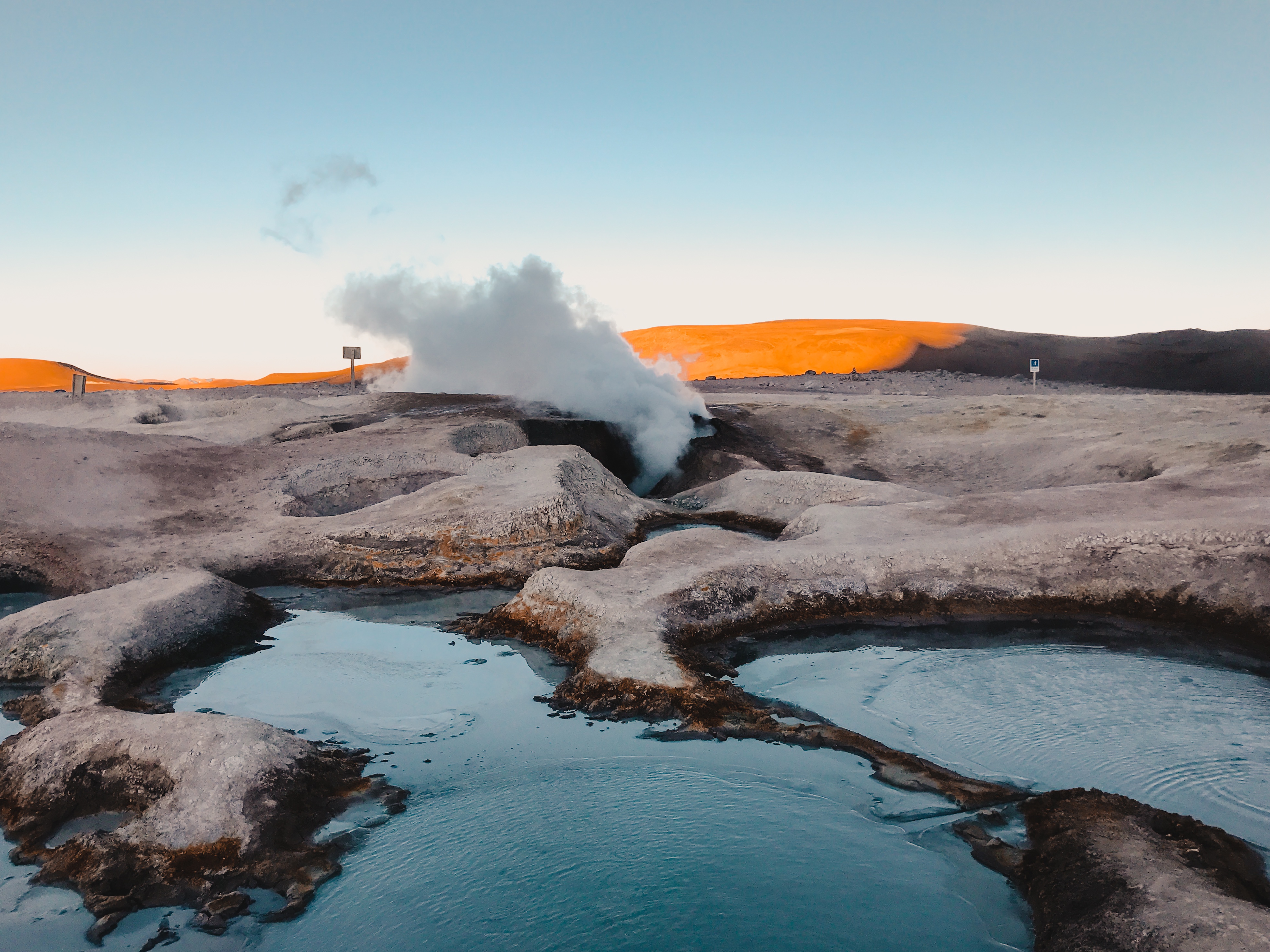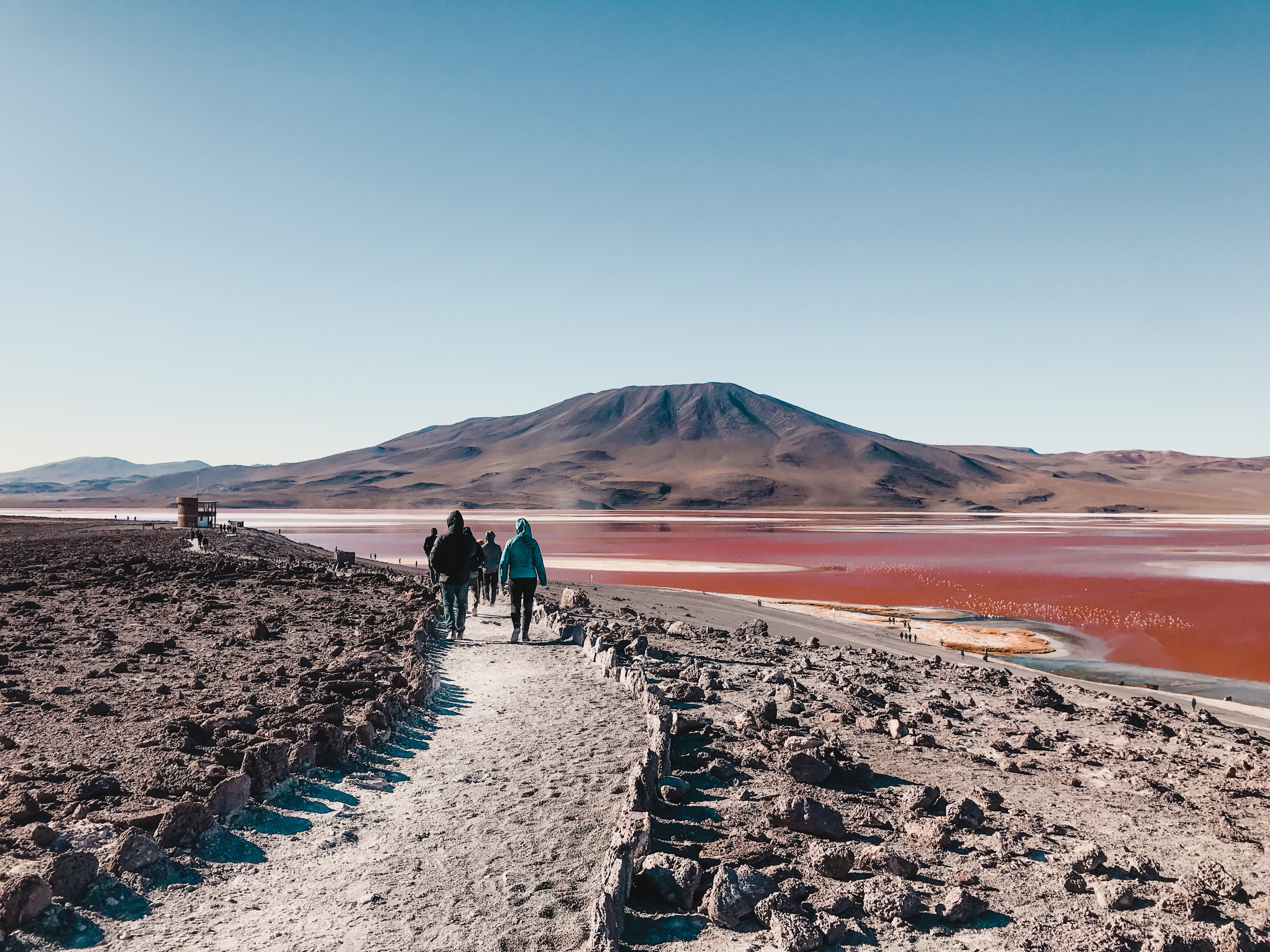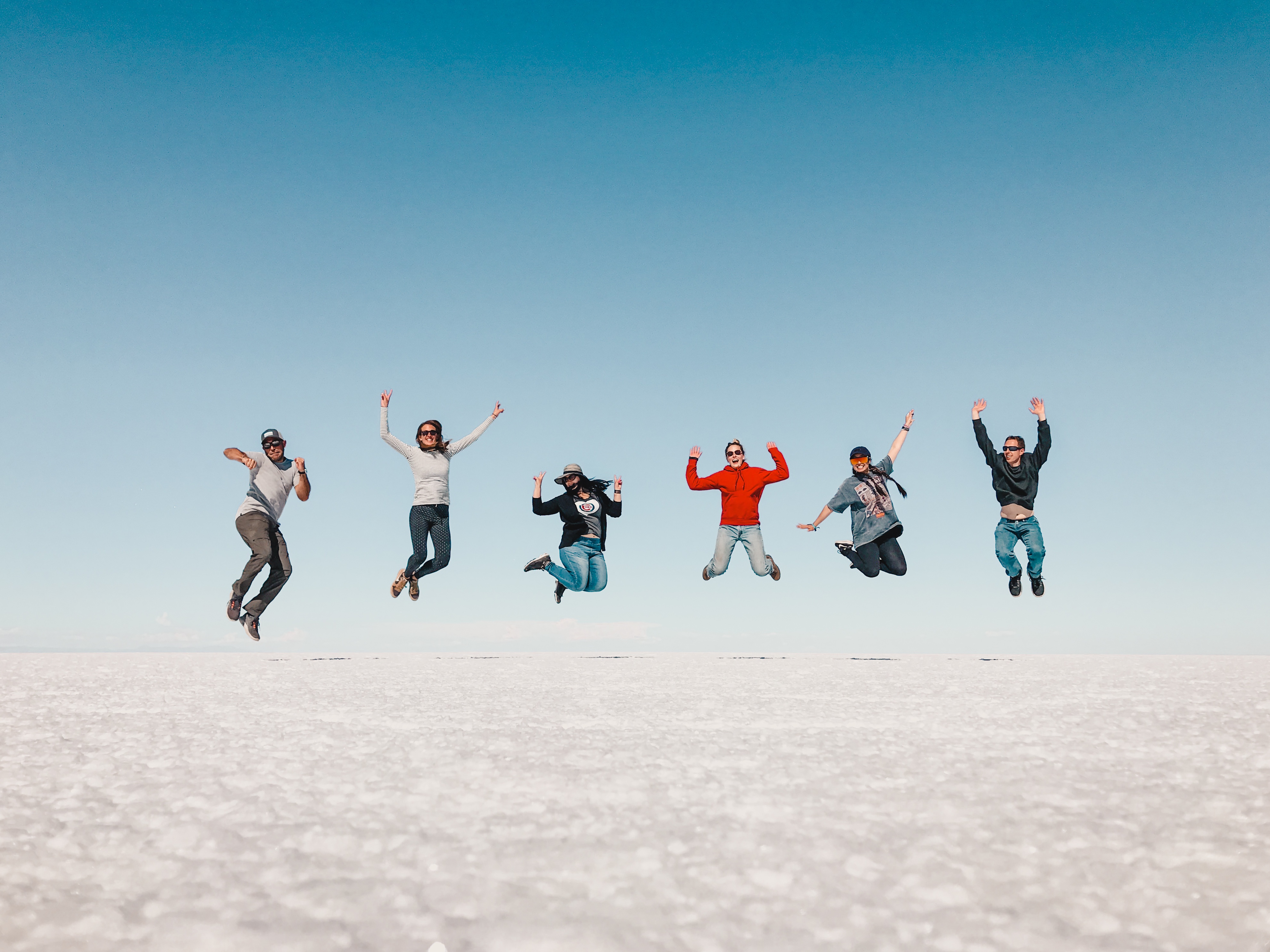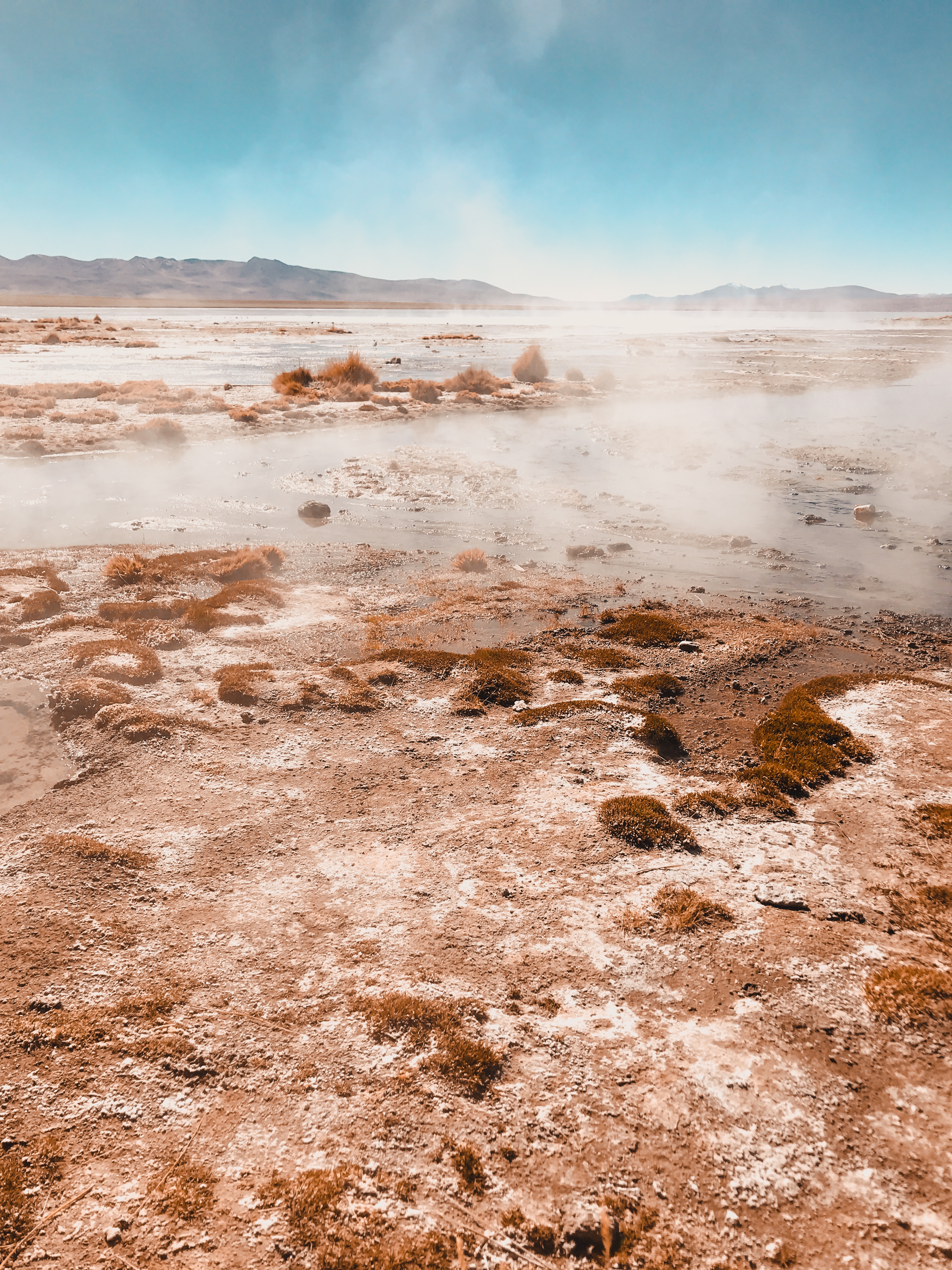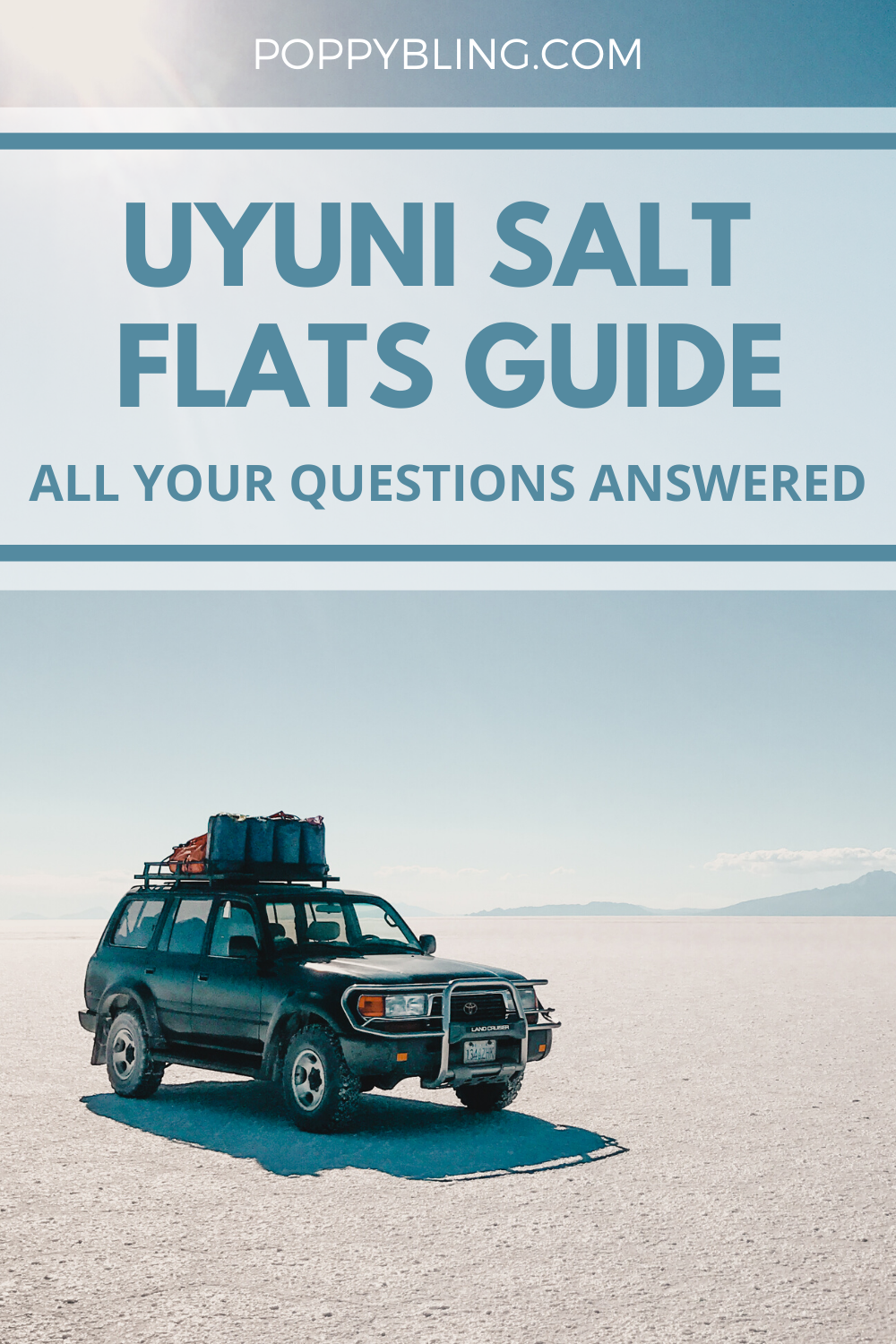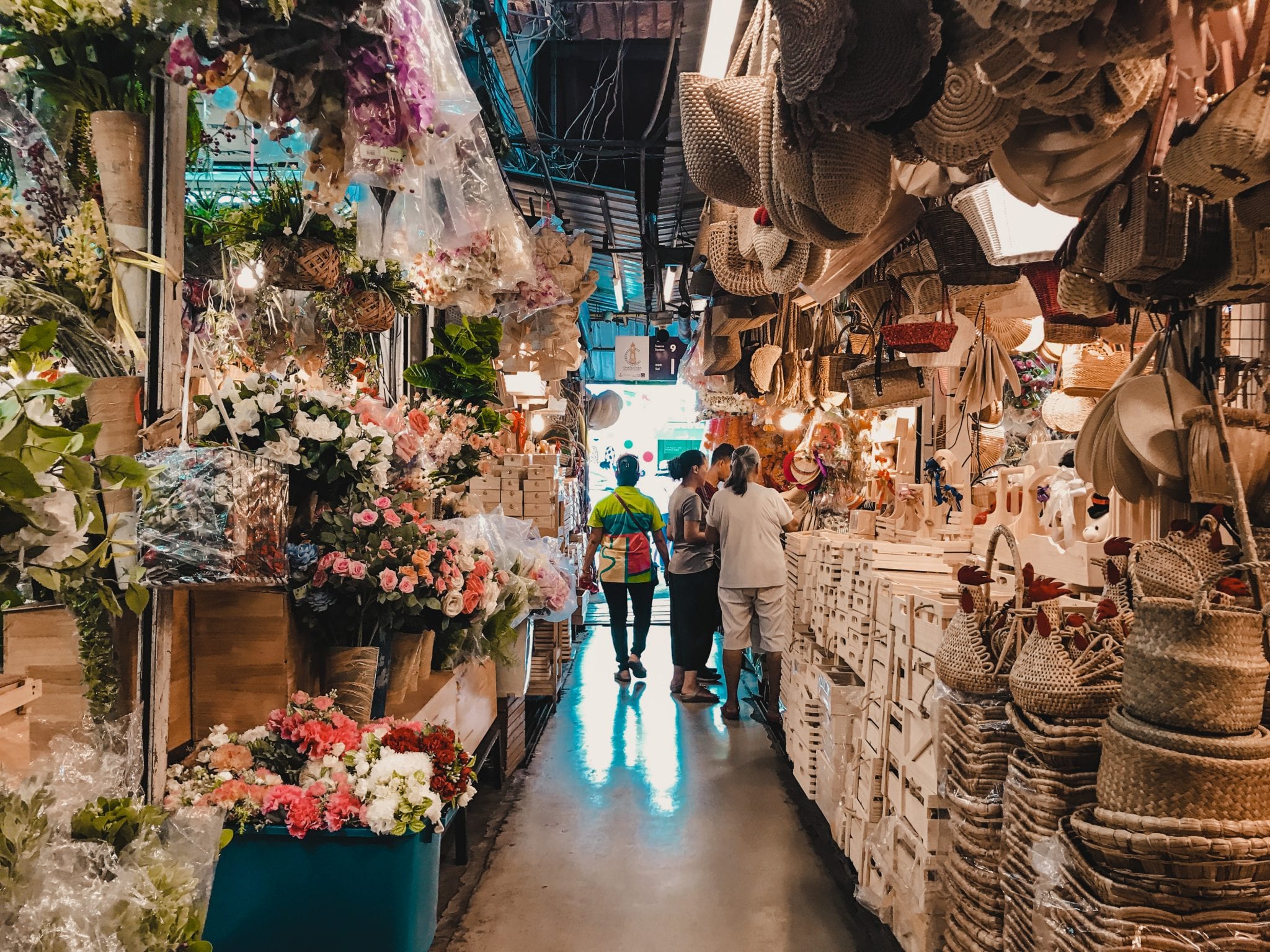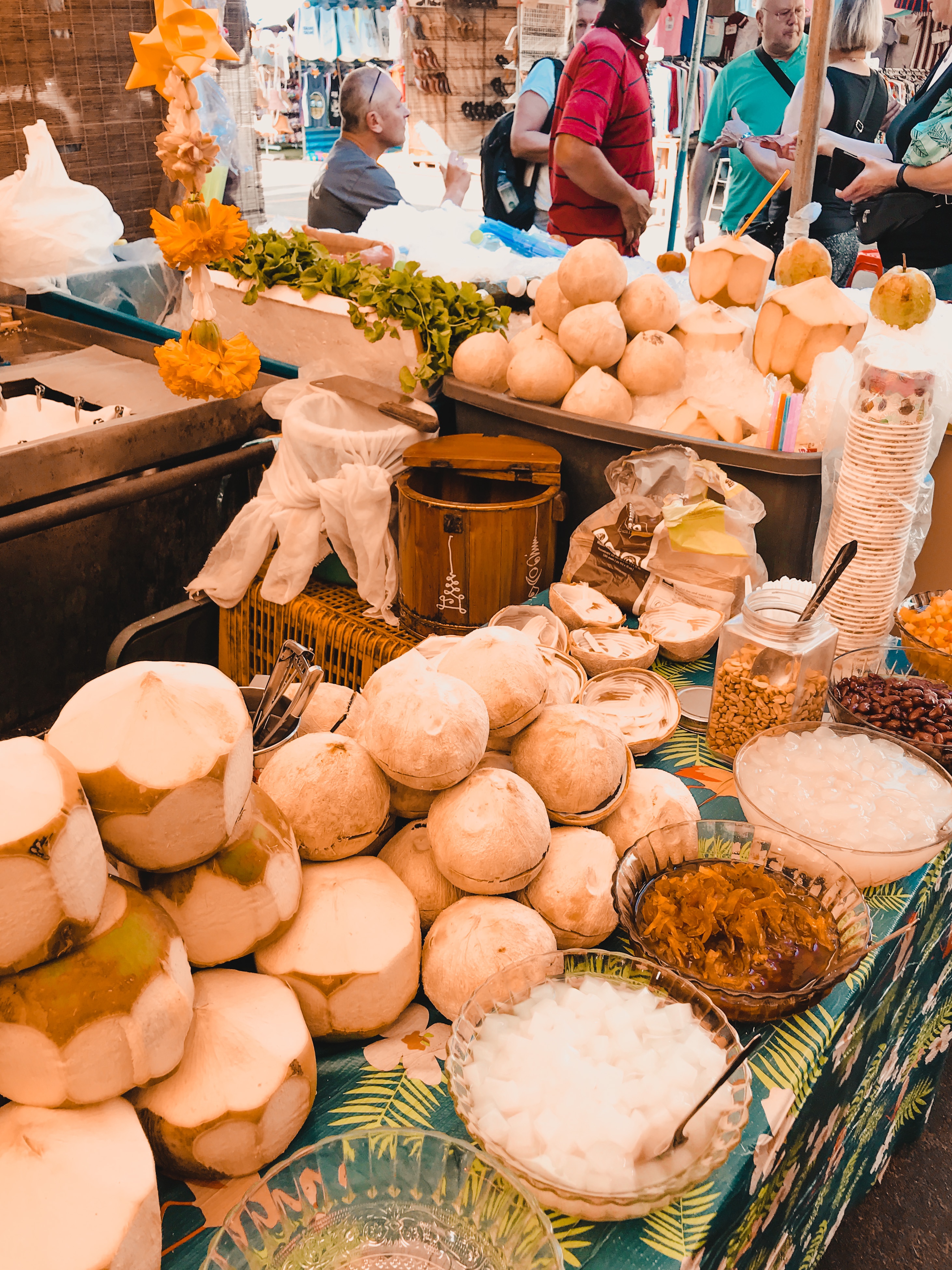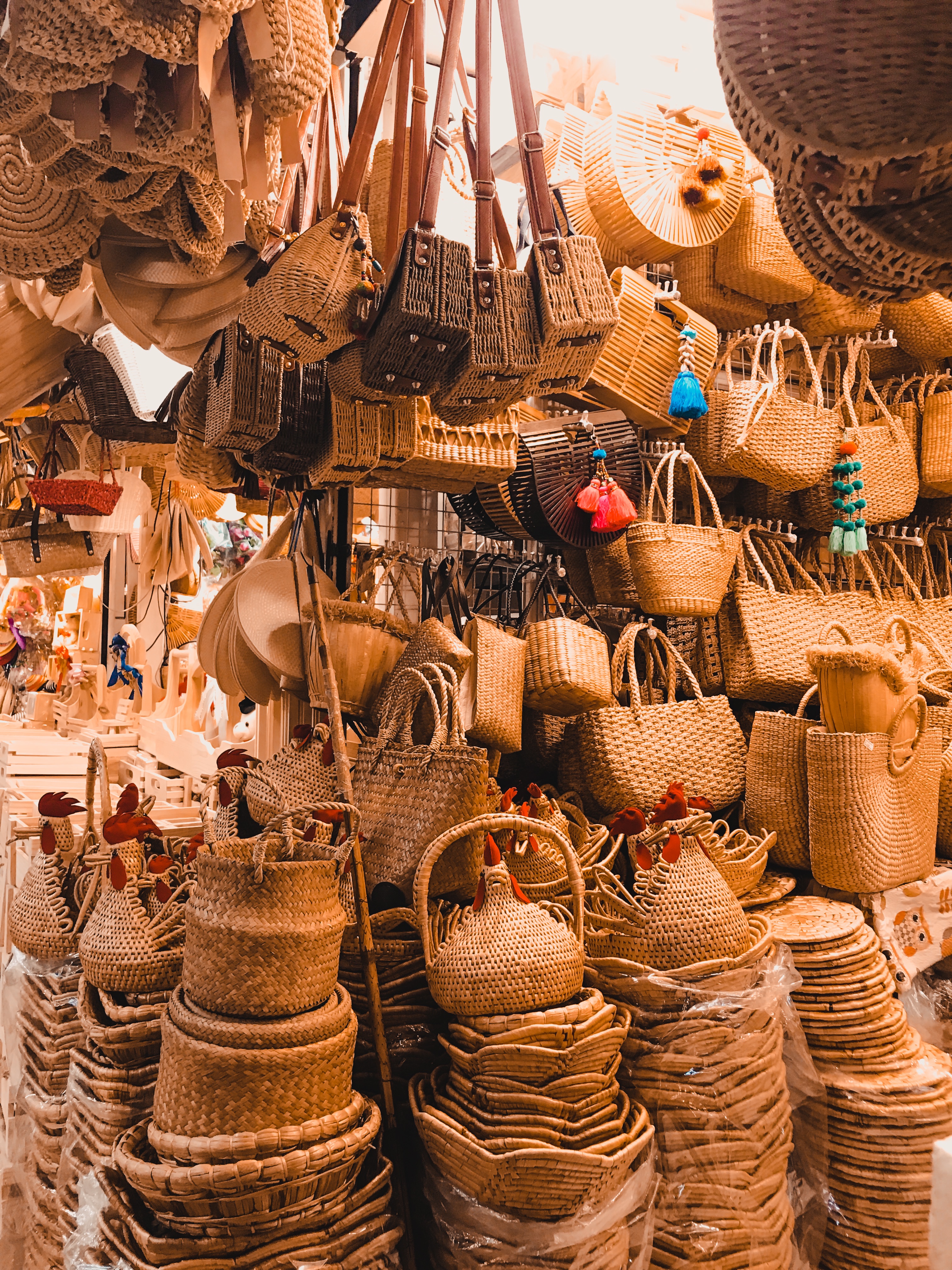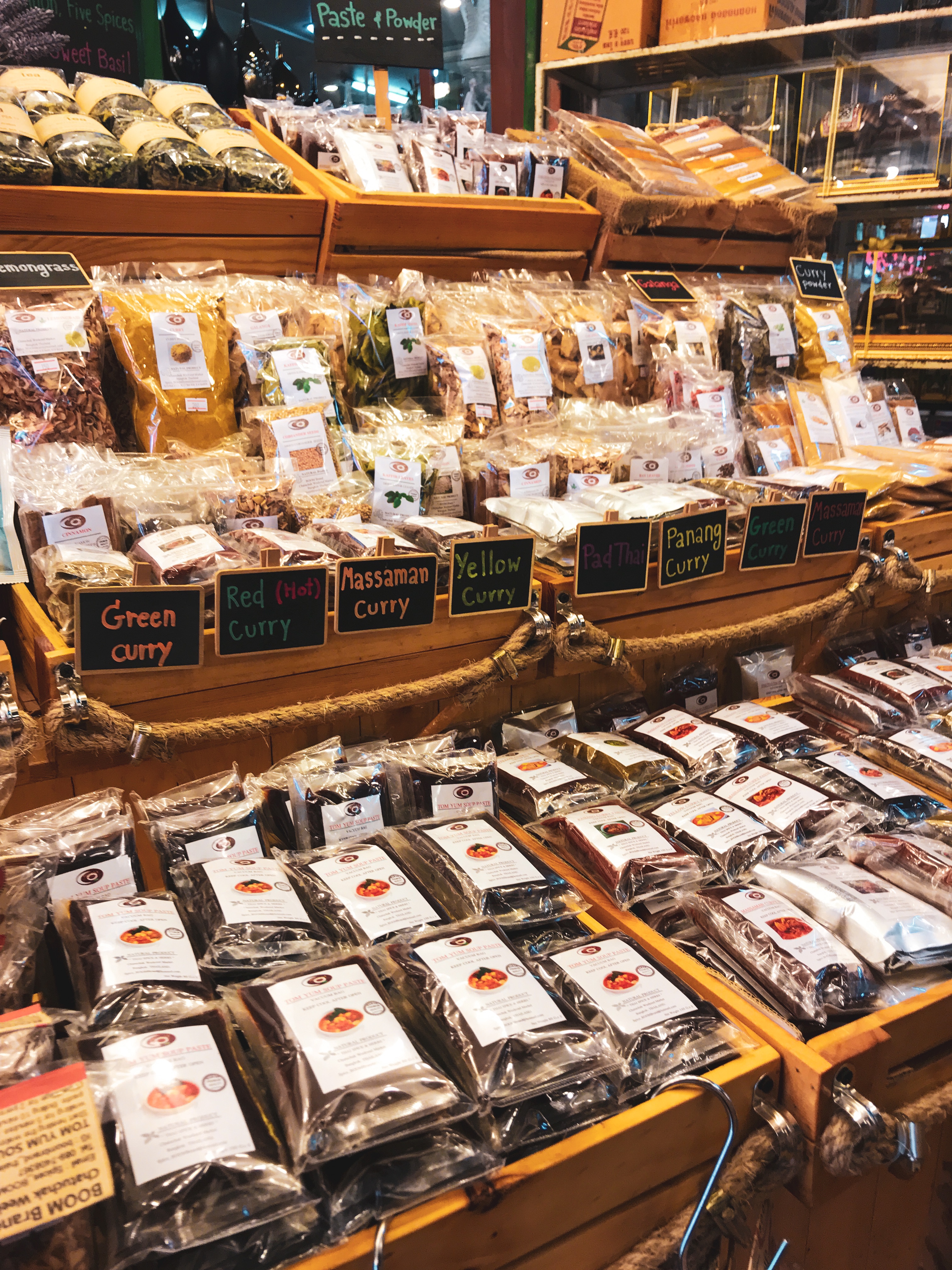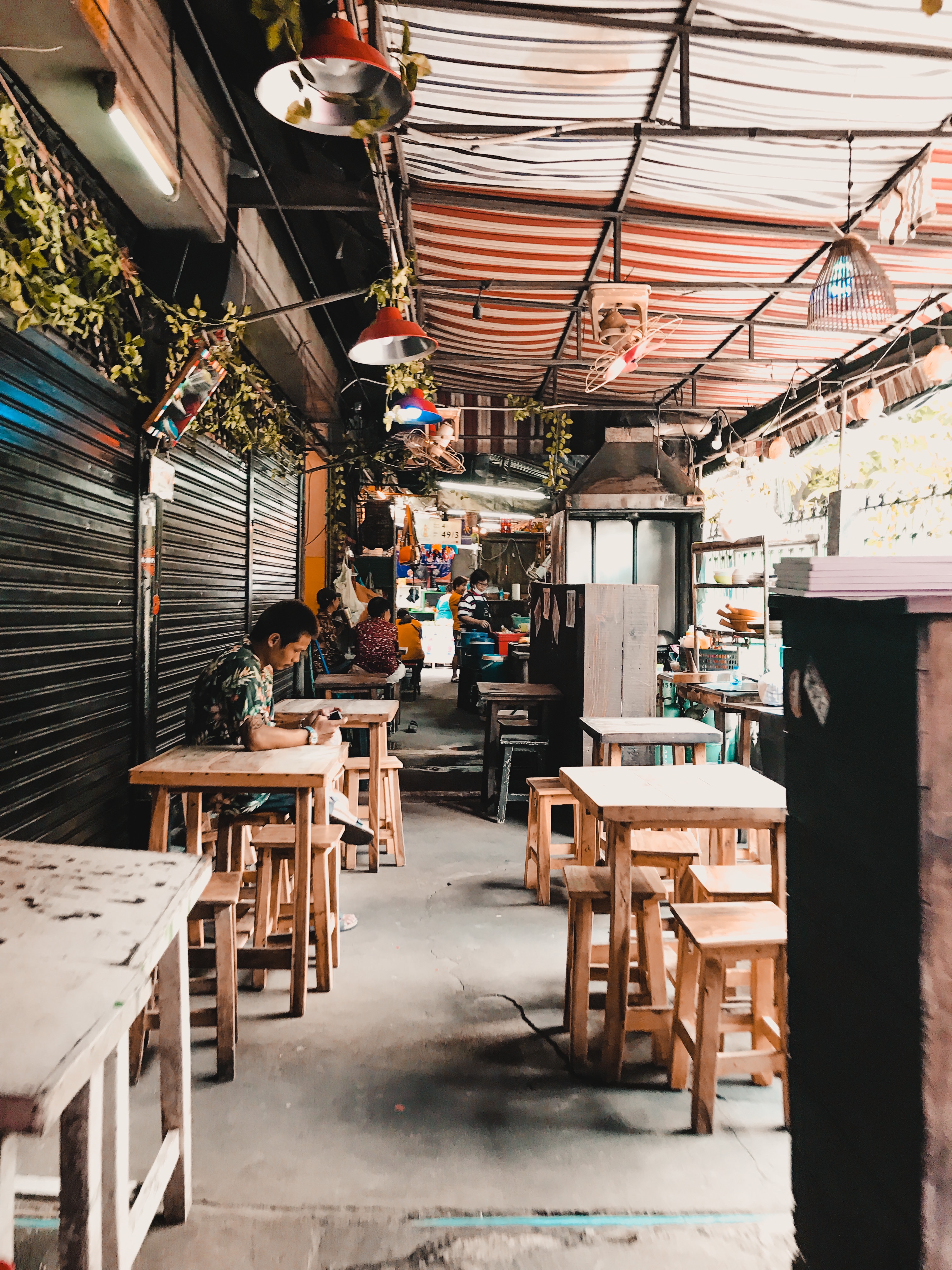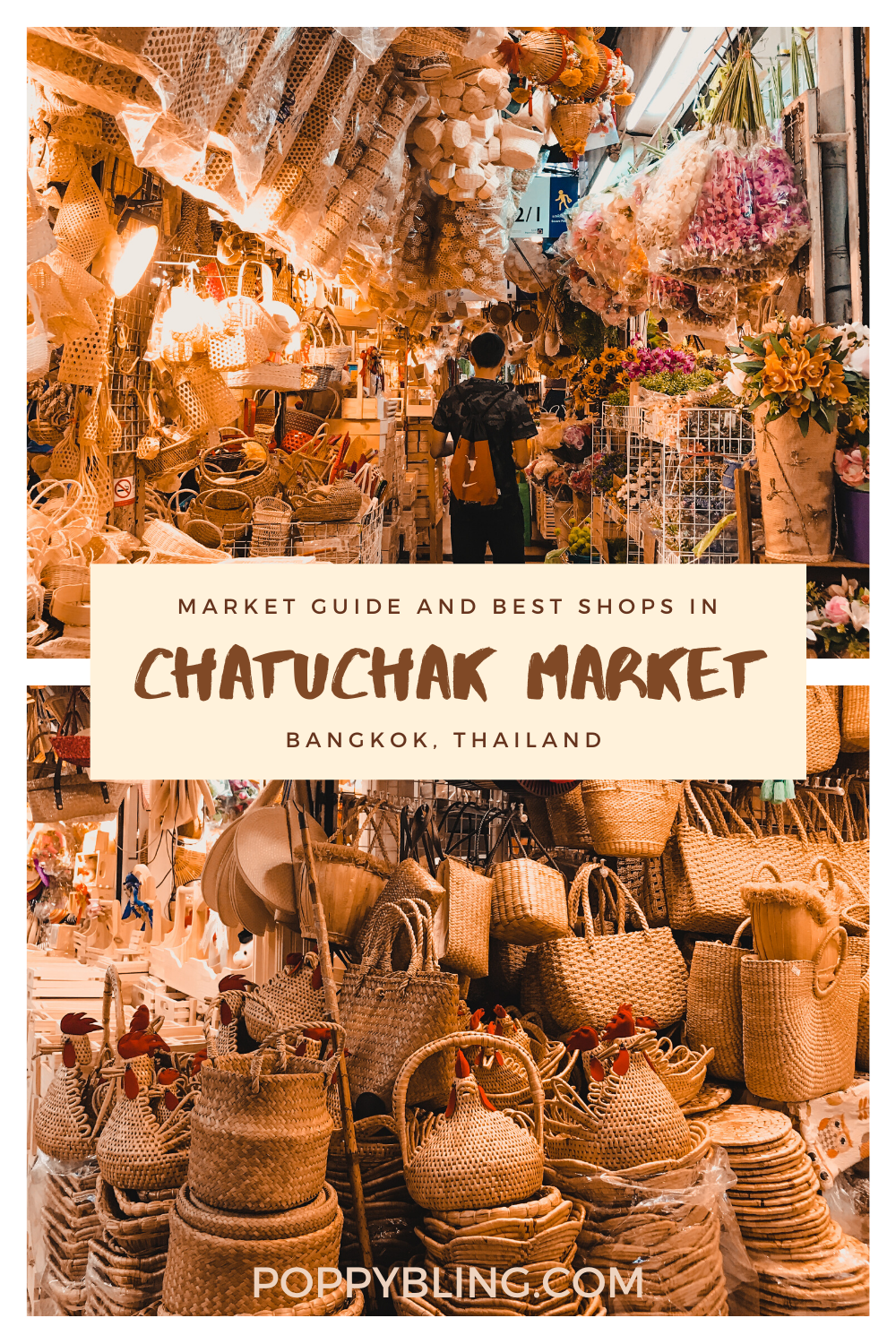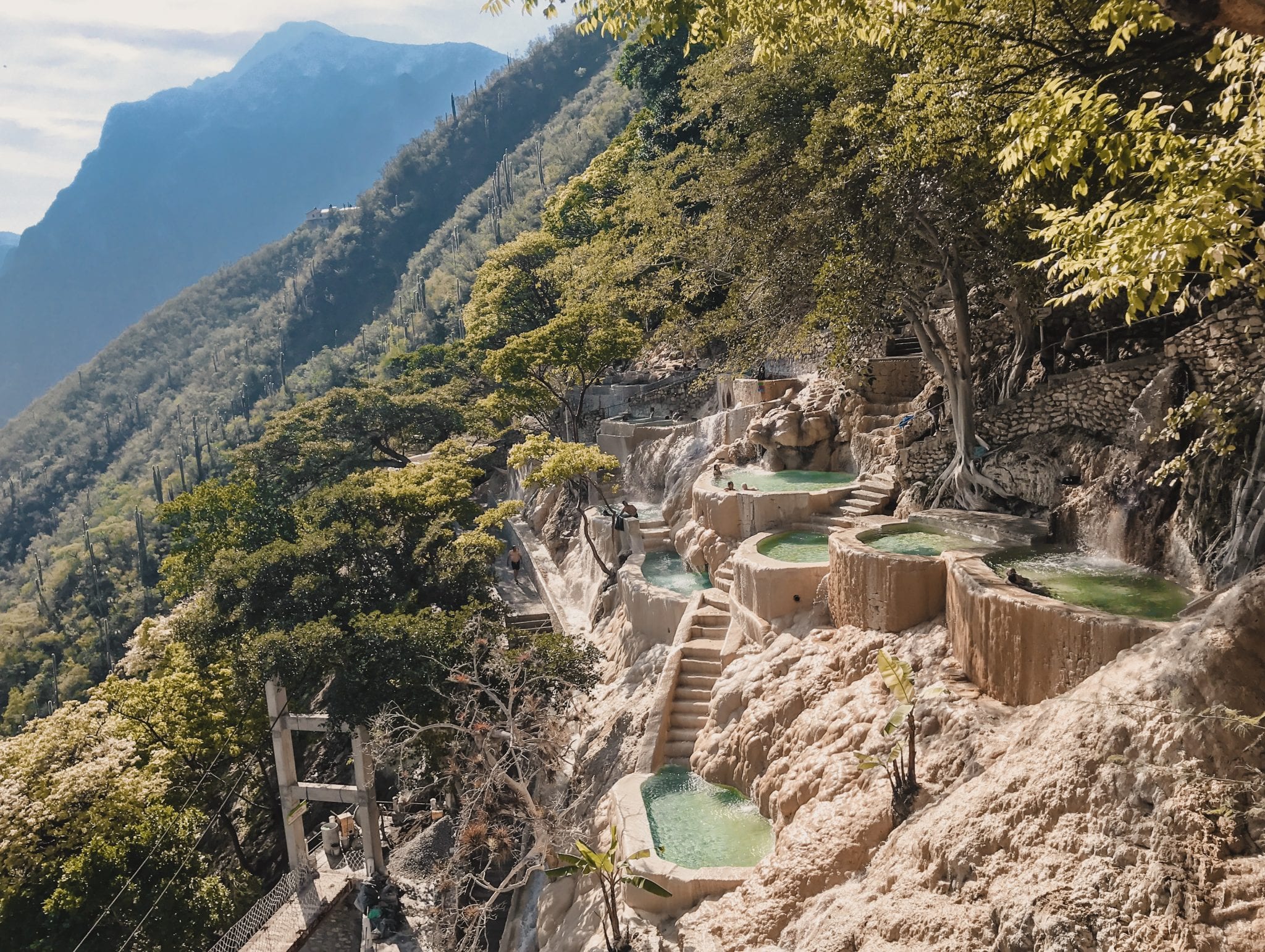
If you search for ‘Mexican Paradise’ on any social media platform, chances are you’ll come across at least one picture taken in Grutas Tolantongo. The elusive geothermal pools are quickly becoming a hotspot for insta-models on vacation in Mexico, although many are quite reluctant to tag and give away the location!
I must admit, I stumbled upon these pools in the same way as most do. After seeing a picture of the iconic pools on Instagram with no geotag, I was determined to find out more. I’ve done the research and digging so you don’t have to. Keep reading to find out everything you need to know about visiting Grutas Tolantongo!
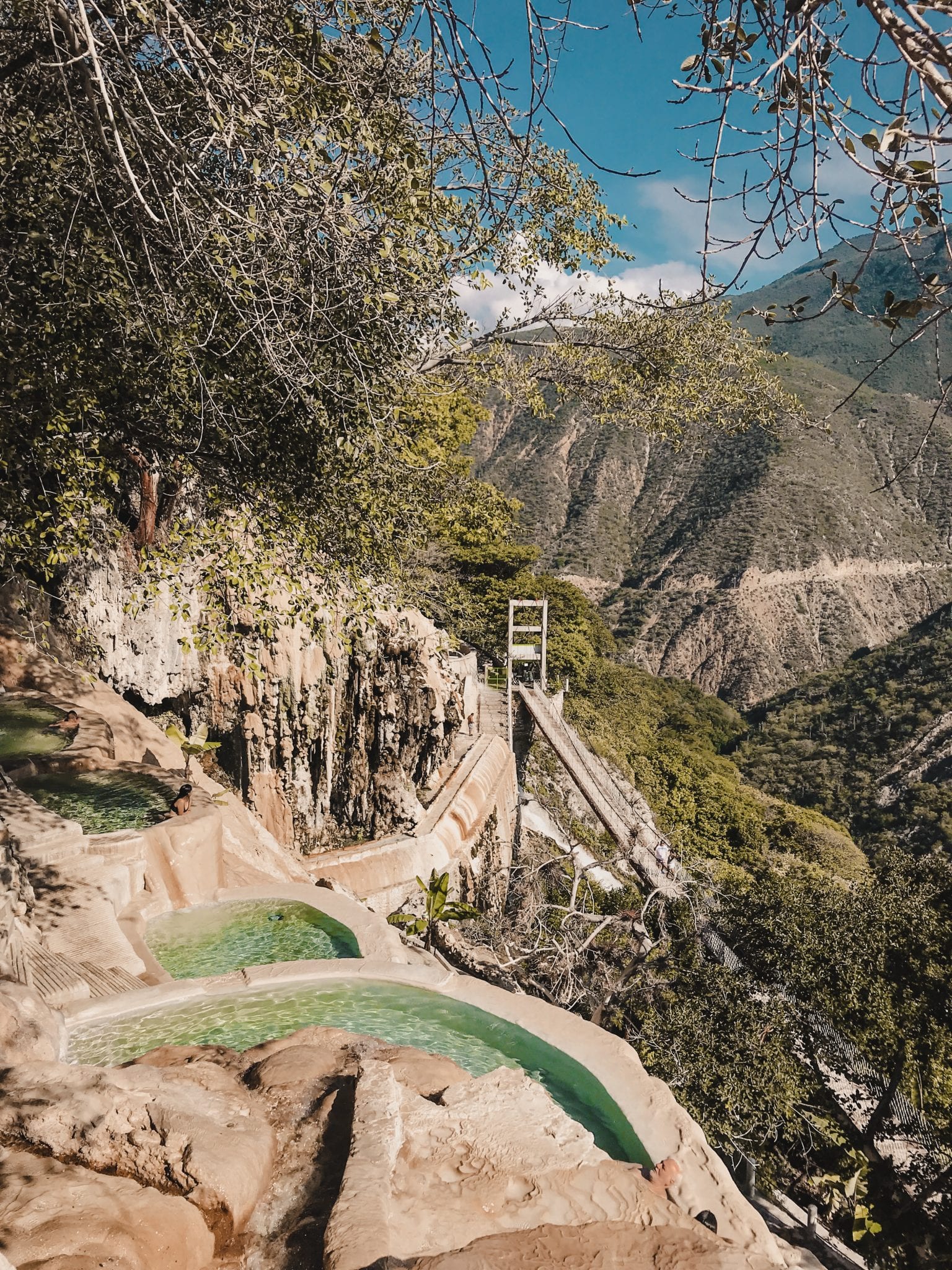
How to get to Grutas Tolantongo
The Grutas Tolantongo hot spring complex is nestled in the Hidalgo region of Mexico. Only four hours away from Mexico City, I was excited to put Grutas Tolantongo on my Mexico itinerary to break up the hustle and bustle of CDMX.
I found a few bits of information online about hiring a car and self-driving or taking the public bus to Grutas Tolantongo, but since I was a non-Spanish speaker travelling solo, I decided against these options. I ultimately chose to take a full-day private tour with Nómada Tours to the hot springs (5am-7pm). My guide took care of everything throughout the day, and I would highly recommend Nómada Tours if you’re interested in a stress-free trip to the pools.
The drive from Mexico City to Grutas Tolantongo takes around 4 hours (traffic-dependant, of course). I did find the trip to be a little bit longer on the way back. The hot springs are pretty remote, and the drive will take you through the Mexican desert countryside. There’s very little phone reception and no big towns nearby. You are truly in a secluded oasis by the time you arrive to the pools.
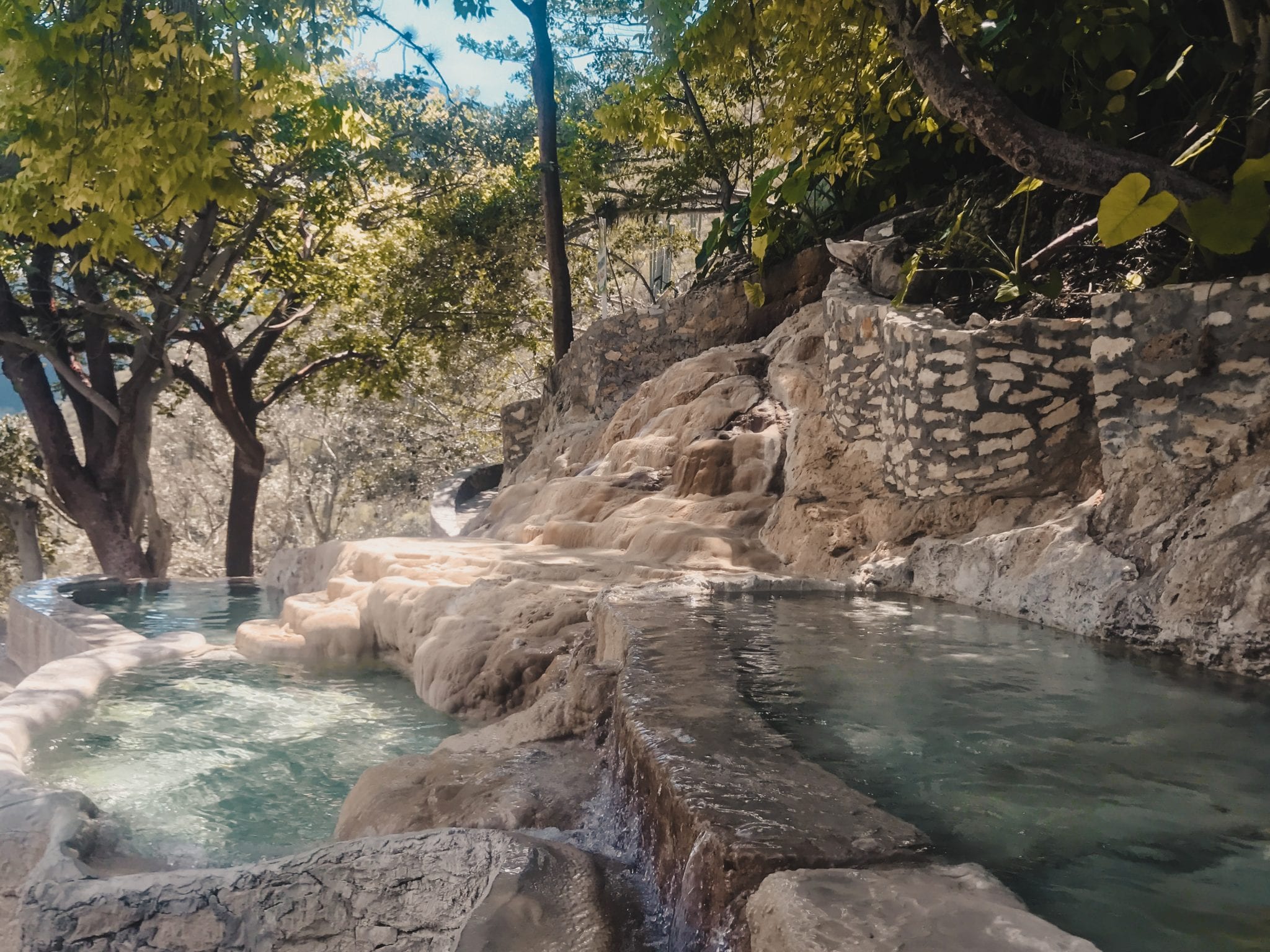
Entrance fees for Grutas Tolantongo
Entrance to the Grutas Tolantongo area is 150 pesos, which includes entry to all the water attractions, and use of the amenities (toilets, showers etc.). Parking is an extra 20 pesos.
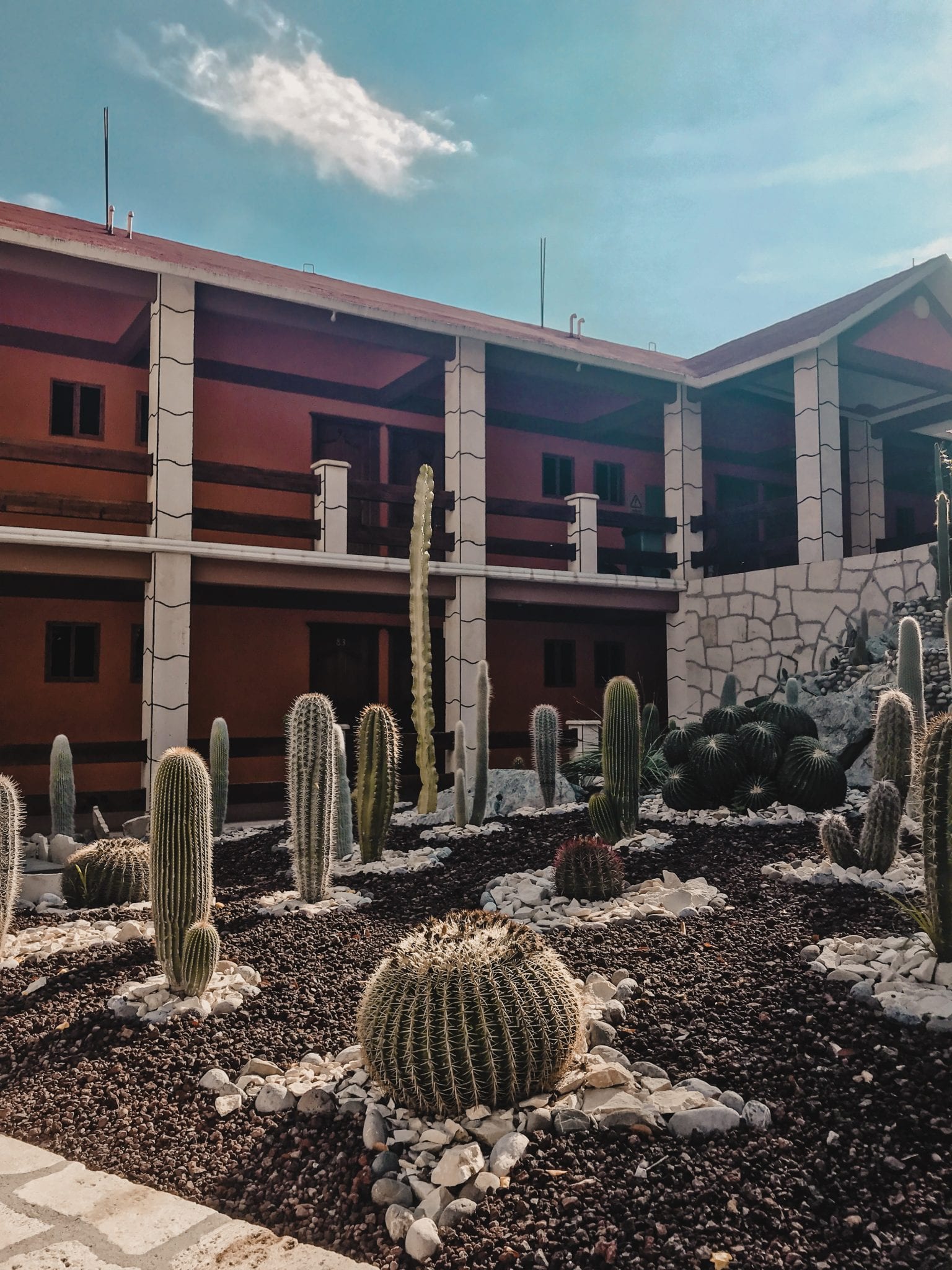
Things to do in Grutas Tolantongo
While the pozas termales (man-made thermal pools) here are the iconic sight you’ll be coming for, the Grutas Tolantongo area actually has many attractions. Along with the man-made pools, there is a geothermal river, a thermal cave/waterfall system, zip line (an extra 100-200 pesos depending on the course), swimming pools and waterslides. You can also go hiking in the area if you wish. Here’s breakdown of the main activities.
Pozas termales
What’s not to love about cascading pools with sweeping valley views! These hot spring pools perched on the mountain are paradise. Don’t be fooled by the quiet pictures though, expect these pools to be busy with couples and big local families. If you arrive early on a weekday though, you’ll probably be able to score a pool for yourself. It’s tempting to soak in these bubbling baths all day but there’s more to see around the resort, so don’t spend the whole day here. The best place to take a panoramic shot of all the pools is at the entrance next to the security guard.
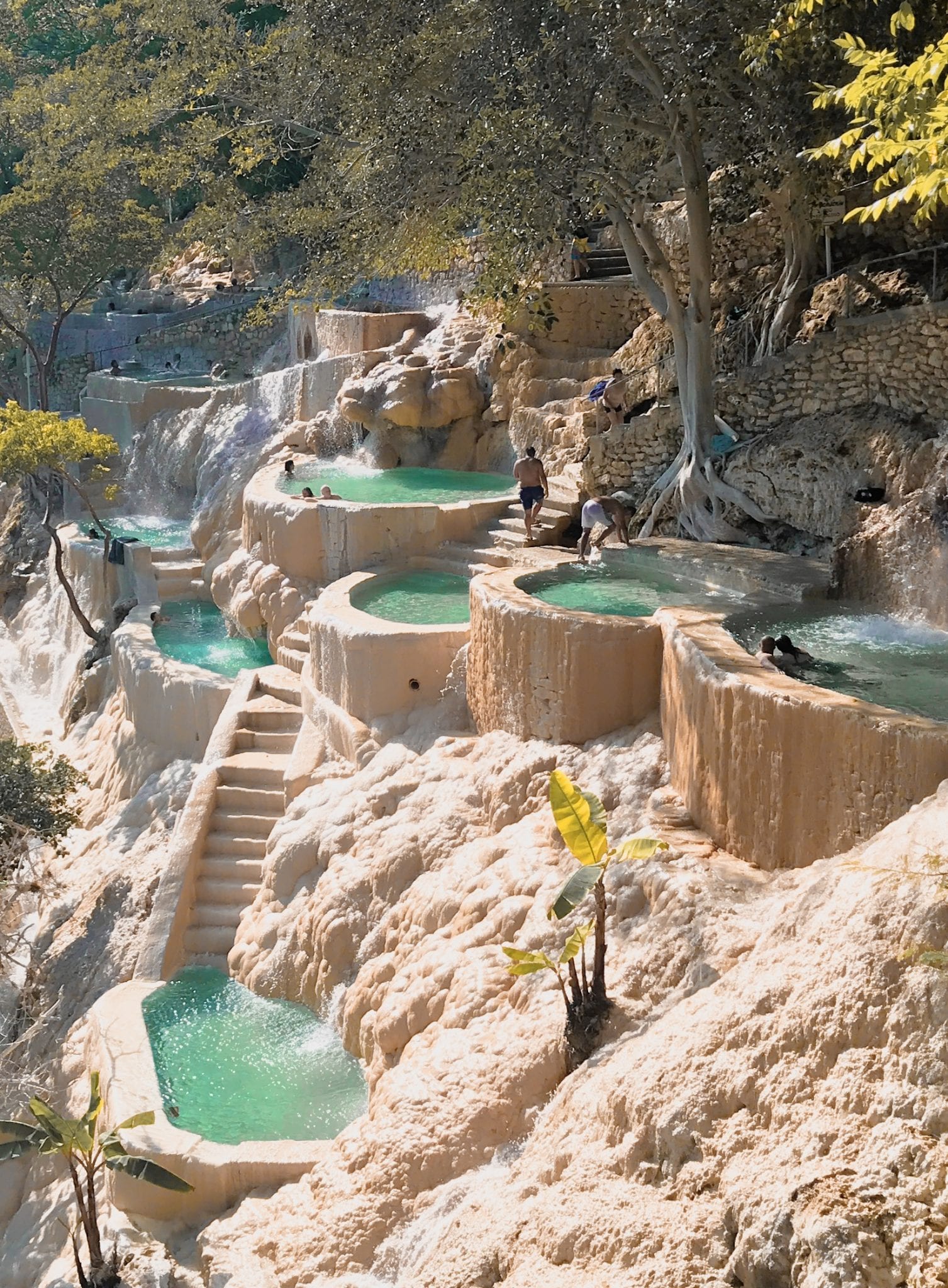
Geothermal river
The river runs fairly slowly so it’s perfect to sit on the rocks in the stream and relax. The water is lukewarm due to the geothermal activity, and have a bit of a sulfur smell, so be warned. It’s a great place at the bottom of the valley to camp or have a picnic.
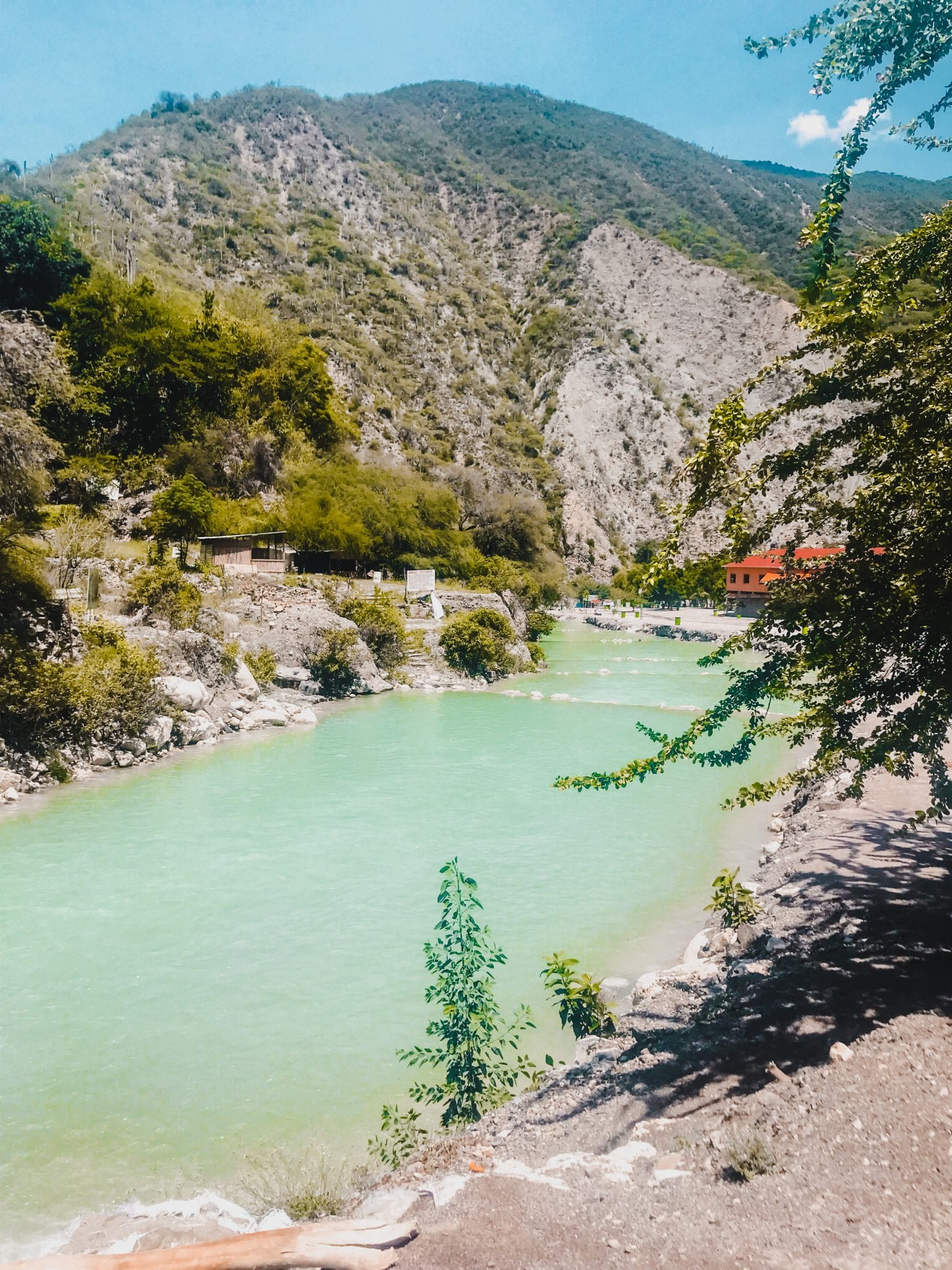
Caves, tunnels and waterfalls
I actually found the caves, tunnels and waterfalls to be the most exciting attractions in the complex. You’ll need to take a short walk up to the waterfall area, which is tucked away in the mountains. Once you wade through the large cold waterfall outside, you’ll find yourself in a large cave. Despite the freezing cold waterfall at the entrance, the water inside is toasty warm thanks to the geothermal waterfalls in the cave. It’s really cool to wade in the area where the two temperatures combine.
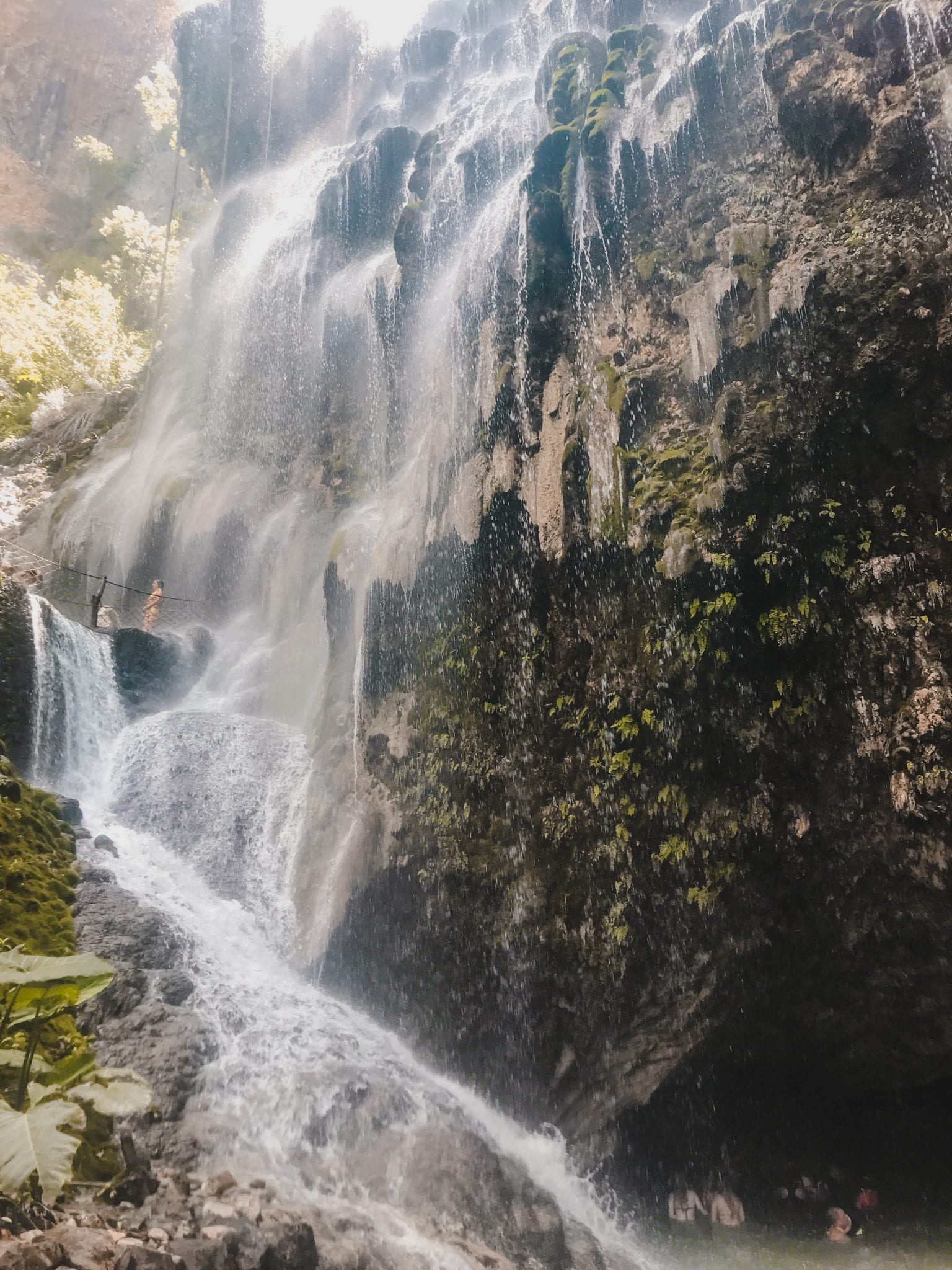
The geothermal waterfalls inside the cave are powerful enough to give a nice back massage – if you stand underneath, it’s like a natural hydrotherapy spa. There are tunnels leading off from the main cave which you can explore if you’ve got a torch. Just be aware of the strong currents if you’re not a strong swimmer. These warm waterfalls are a unique experience you won’t find anywhere else!
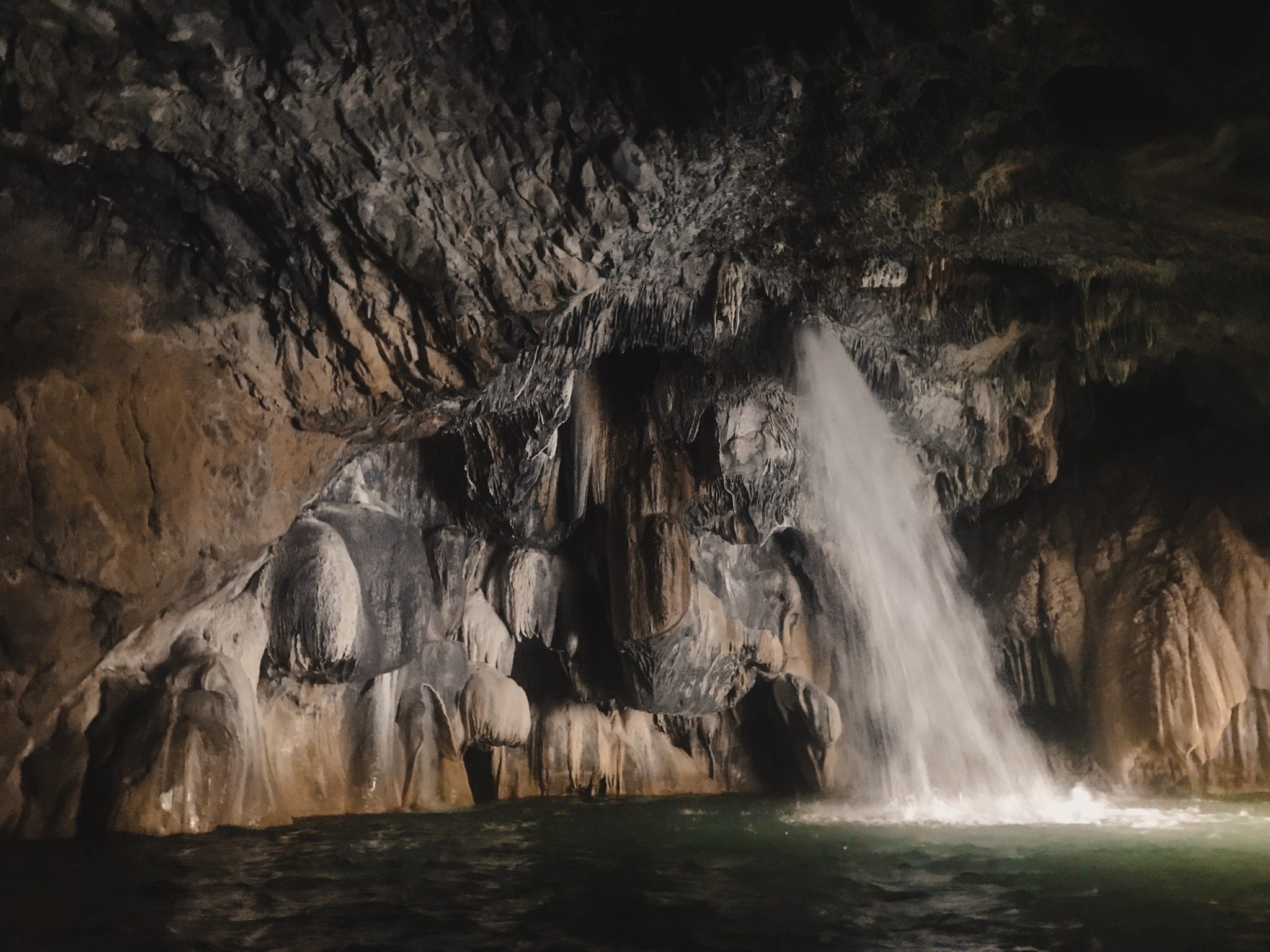
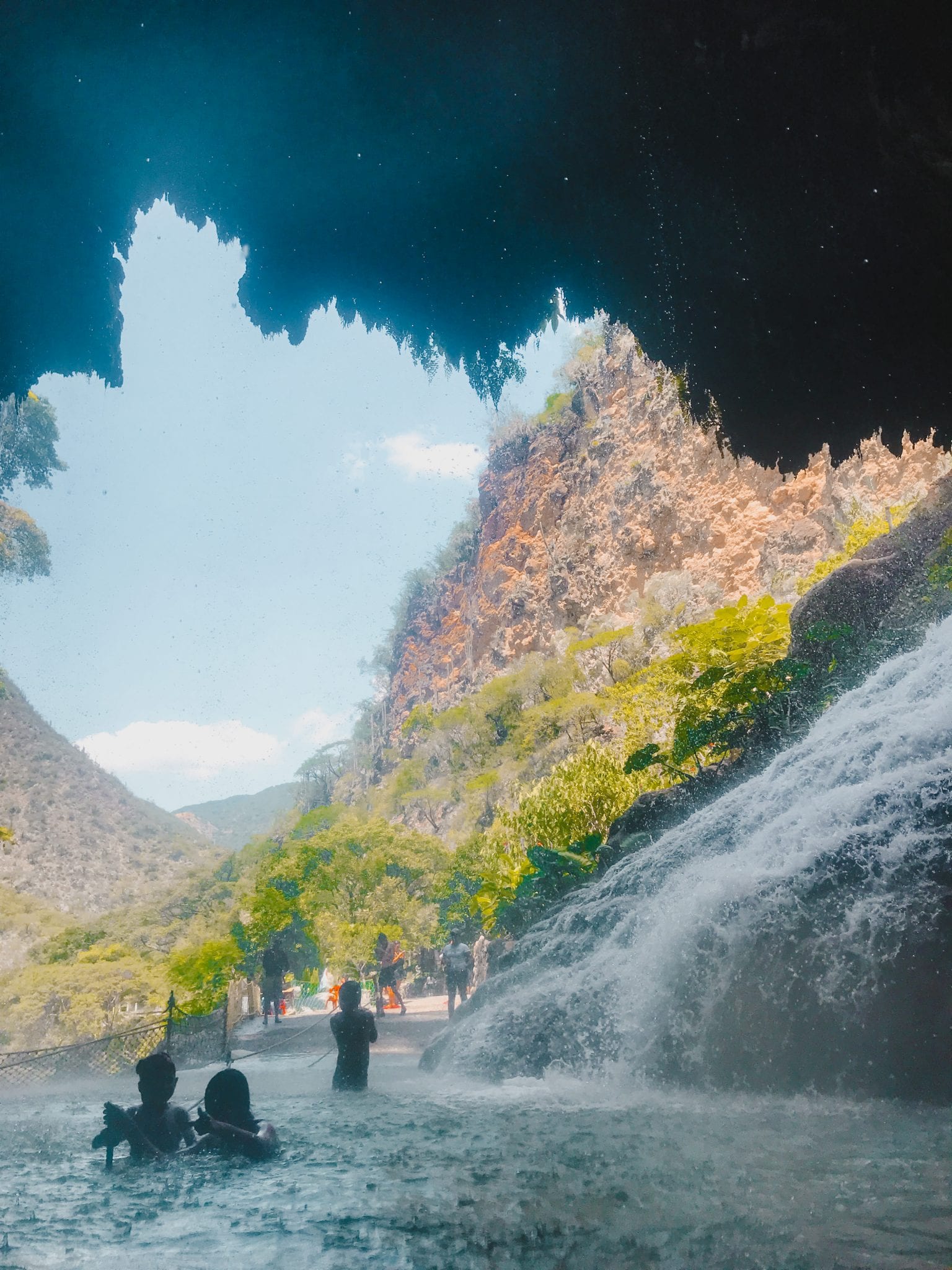
Be aware that the pozas termales pools, river and caves are all in different areas of the valley, so be prepared to drive between them or trek a substantial way. If you don’t have a car, the local hotels run a shuttle between different areas for 60-80 pesos per trip.
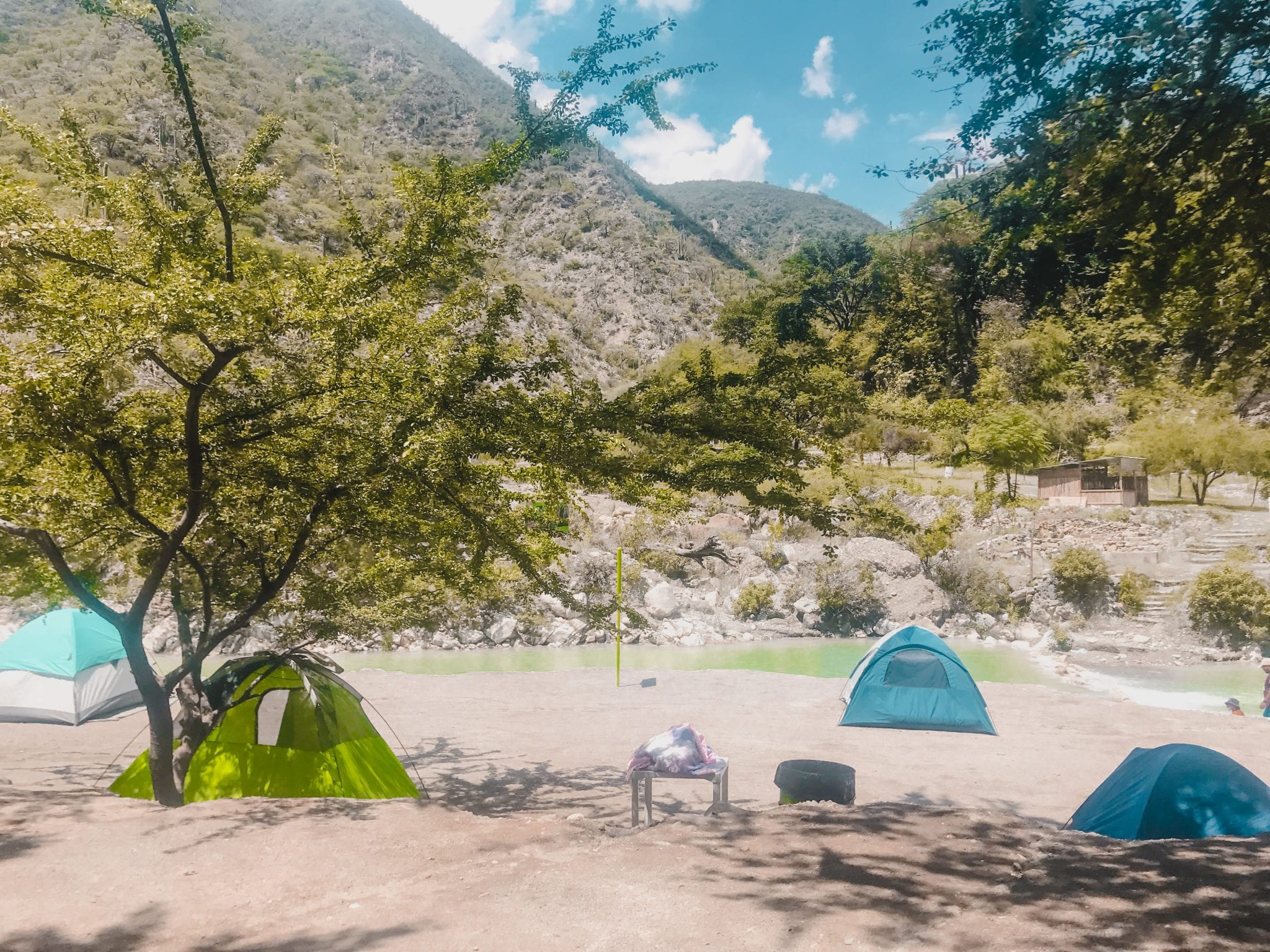
Accomodation in Grutas Tolantango
The are four small hotels in Grutas Tolantango which are run by the Hidalgo locals. They are Paraíso Escondido (closest to the man-made pools and zip line) La Gruta (closest to the waterfall/caves) La Huerta (closest to the river) and Molanguito (at the top of the valley).
These hotels don’t accept reservations in advance, so you must turn up on the day and hope they have space. If there’s no space at the hotels, or you’d prefer a more outdoorsy adventure, you can rent equipment (or BYO) and camp down by the river. Hotel rooms are between 600-1200 pesos, and tents are 120-250 pesos. The whole area is cash only, so make sure you have more than enough for your stay since the closest ATM is an hour away. Some of the Paraíso Escondido bungalows did look like they would be very comfortable from the outside. If I was to go again, I’d probably consider staying the night!
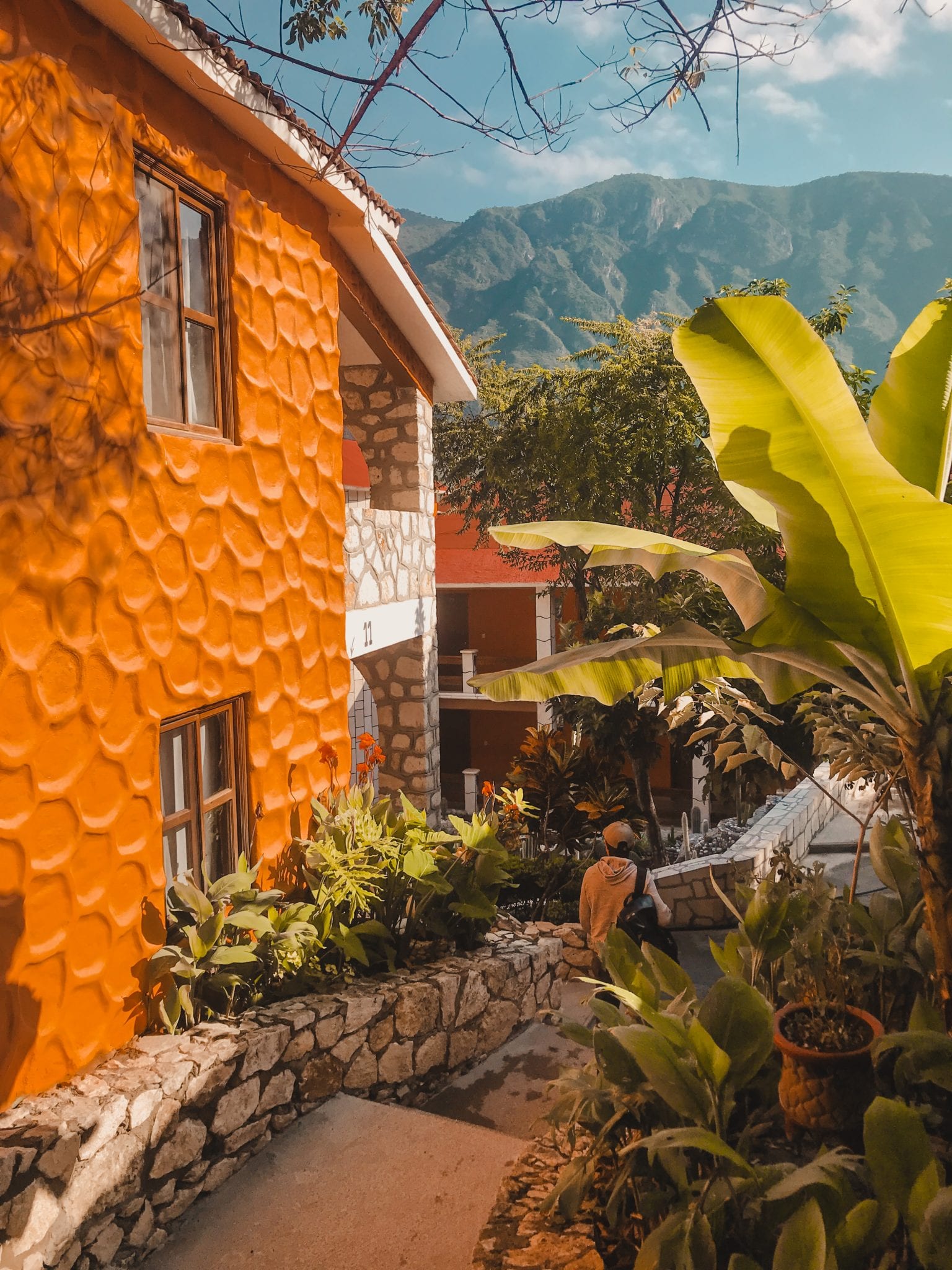
Facilities at Grutas Tolantongo
Since the infrastructure isn’t exactly designed for big buses of Western tourists, don’t expect 5-star resort amenities. The hotels are relatively simple places with half-finished buildings, basic restaurants and lots of overall charm. There is no wifi or TVs in the hotels. There are 8 restaurants in the area with simple Mexican dishes available and a some shops for convenience items (but these are by no means well-stocked). That being said, there are plenty of communal change rooms/showers/toilets in each hotel complex, which are included in your ticket price and were very clean.
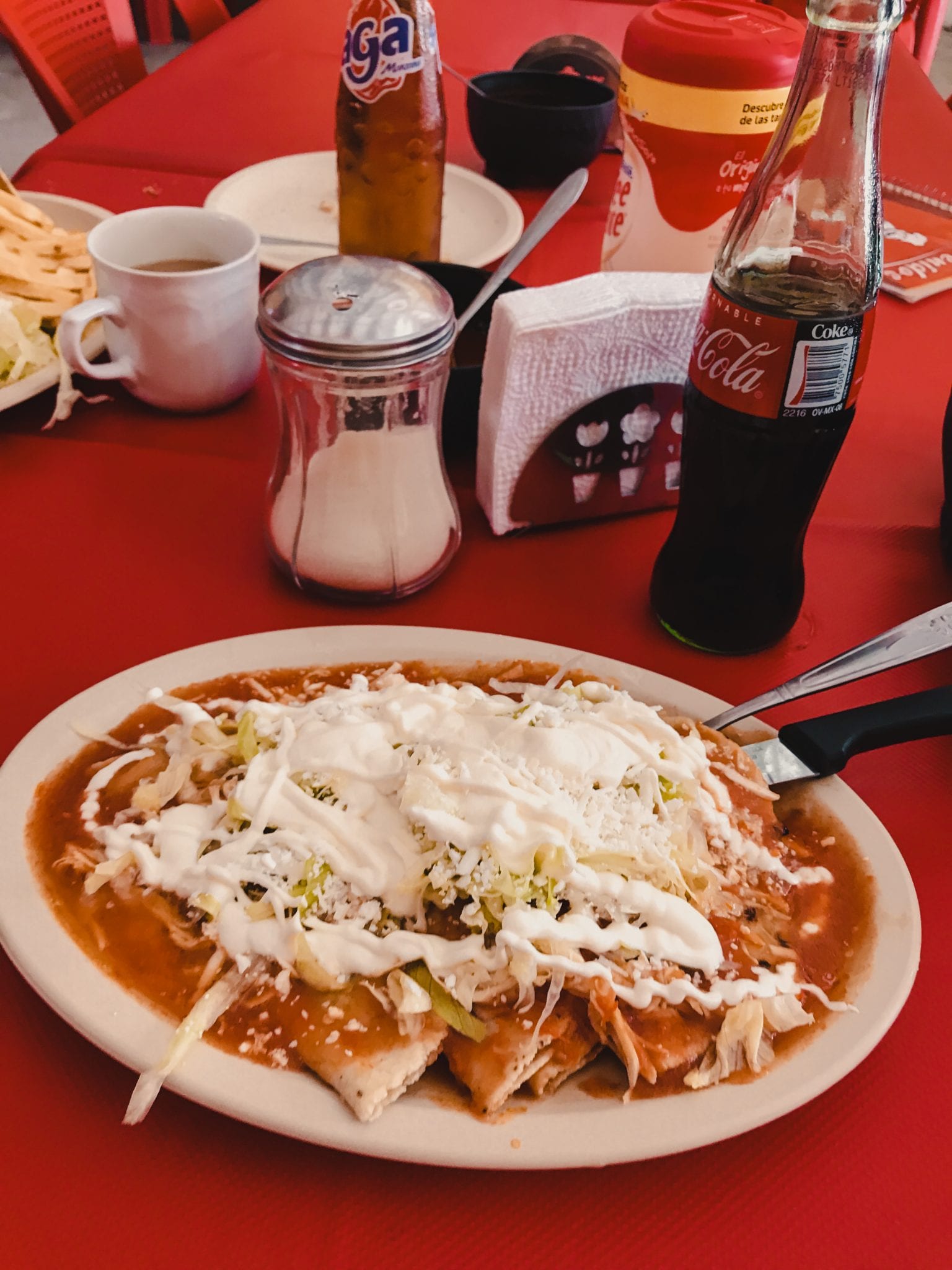
Is Grutas Tolantongo worth visiting?
Truth be told, Grutas Tolantongo is an authentic Mexican paradise. Since I’d seen so many instaworthy pictures online, I was expecting at least a few people with big cameras and tourists lining up for the perfect shot in the pools. But I didn’t meet any other Western tourists on the day I was there – literally none! It was truly a picture-perfect Mexican getaway. I would recommend to anyone who has time to visit.
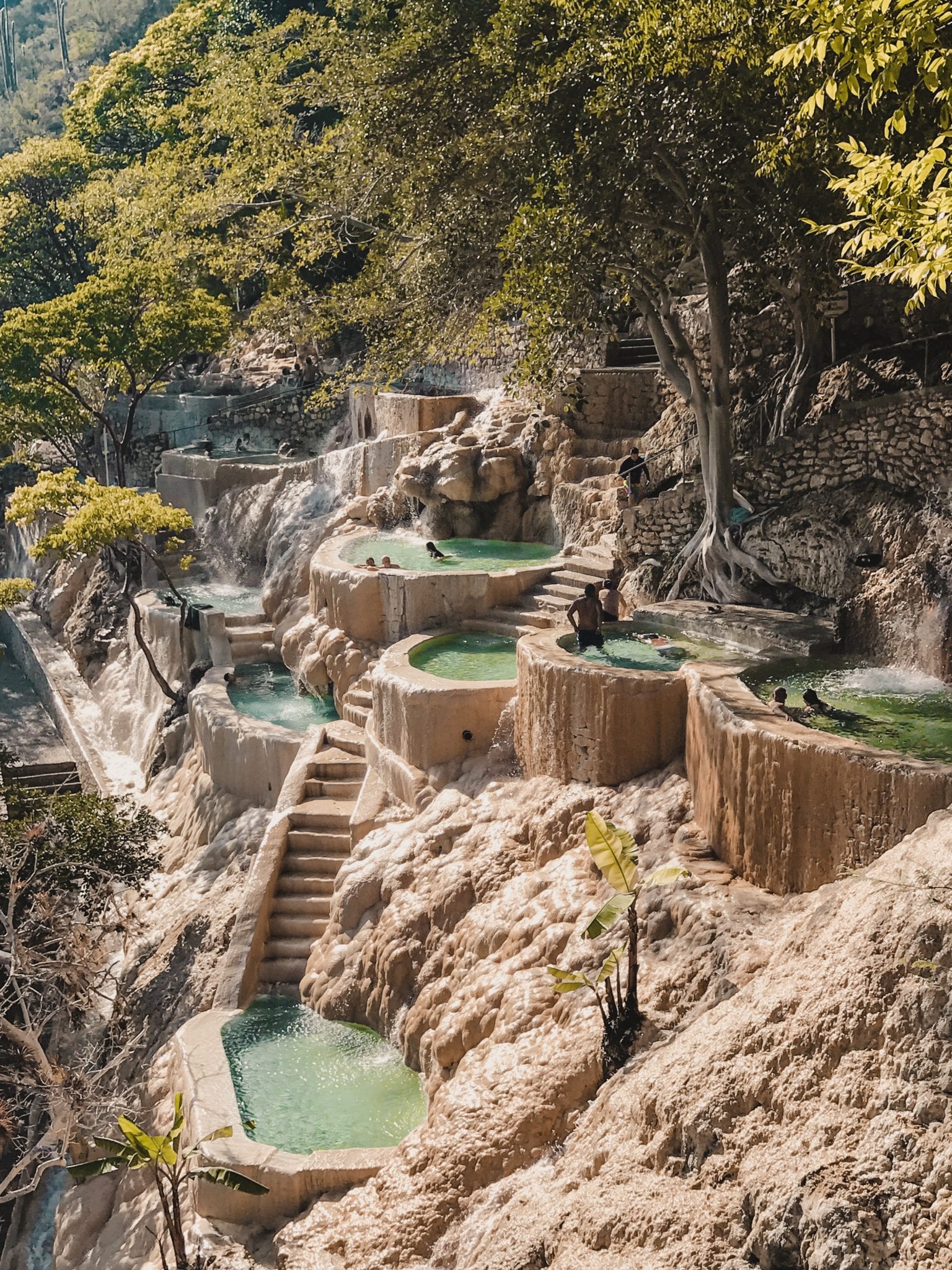
Poppy xoxo
You can find out more about Grutas Tolantongo on the offical website here.
Want to read more about Mexico? Check out my guide to the 10 best places in Mexico City for tacos!
